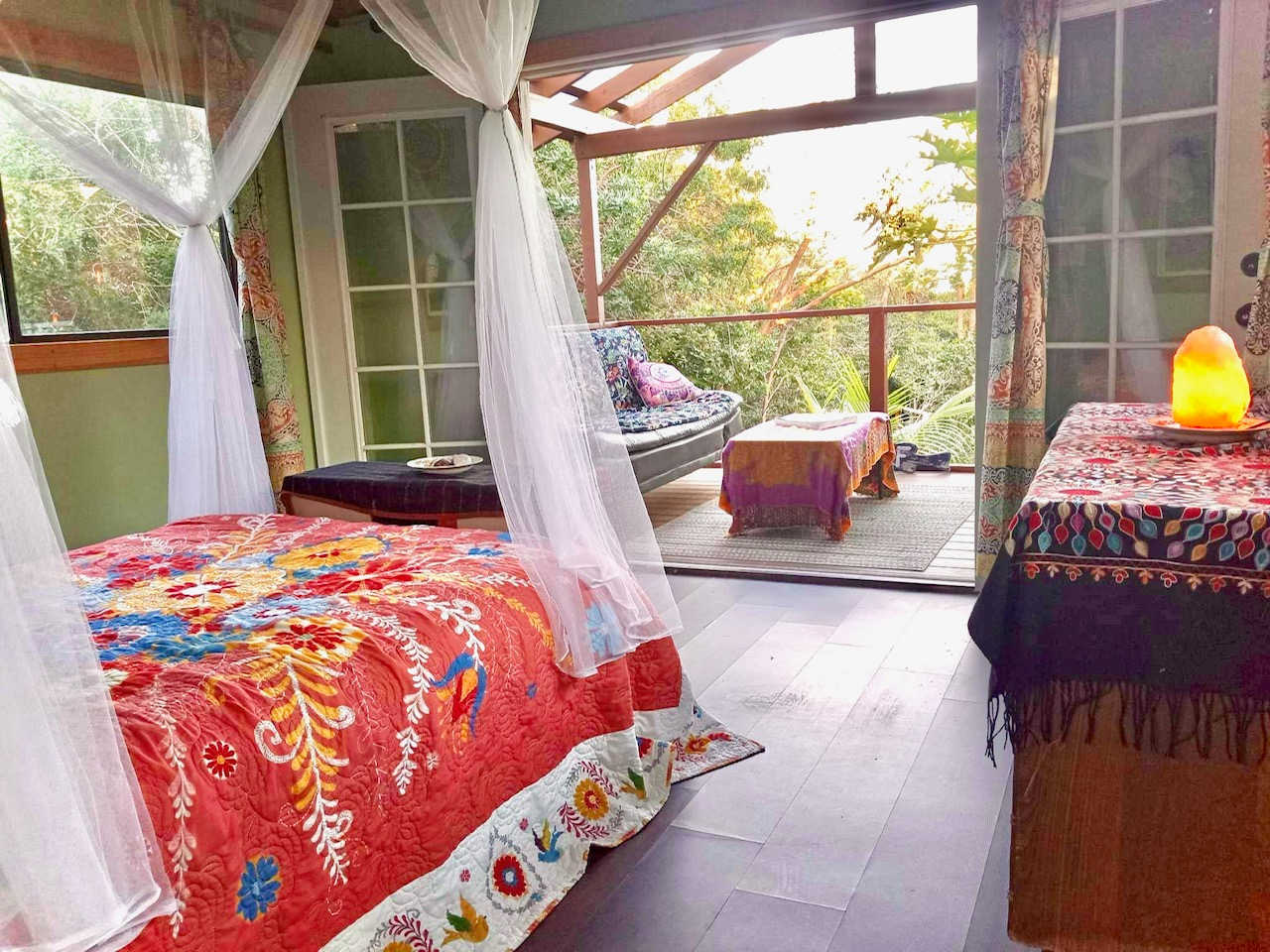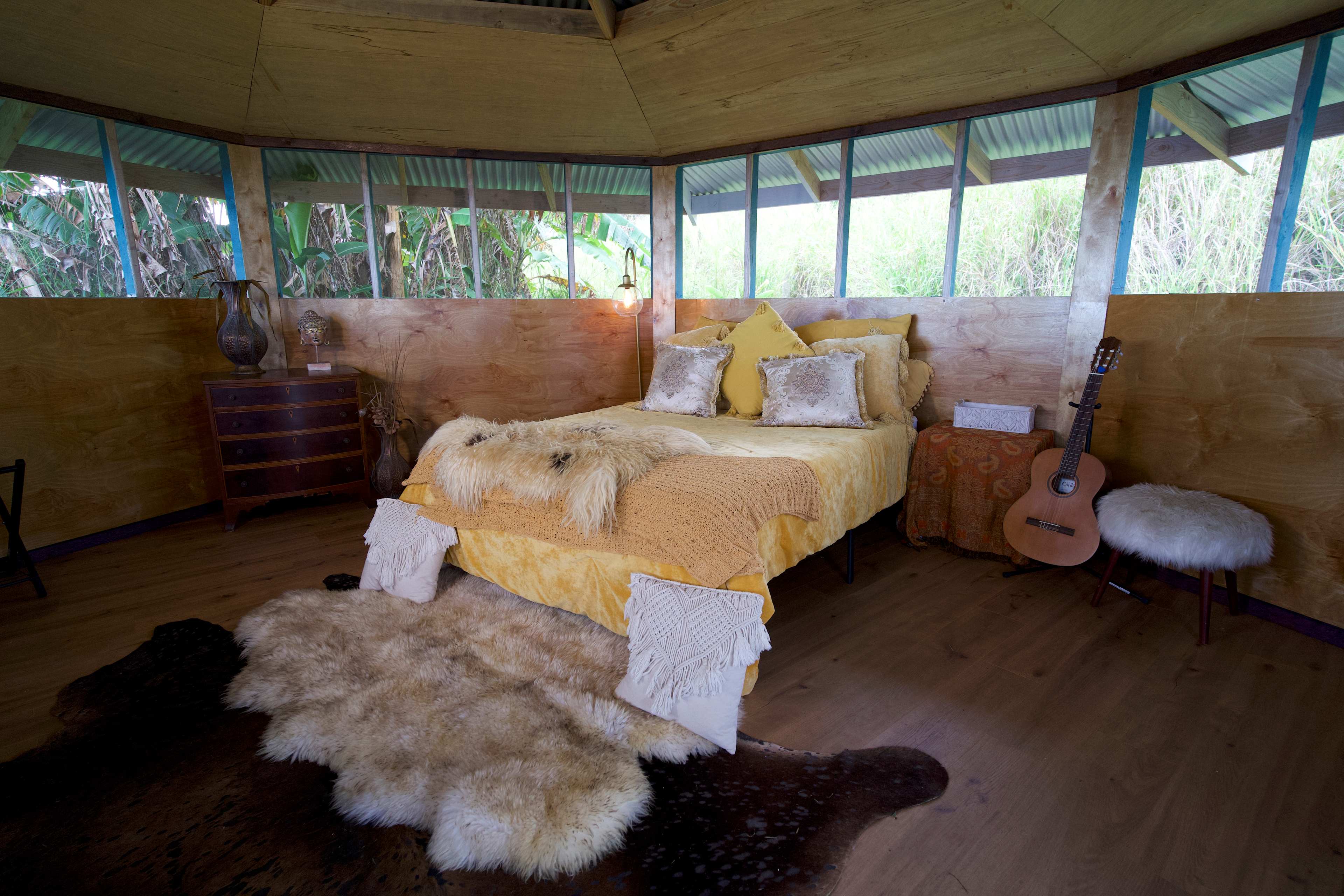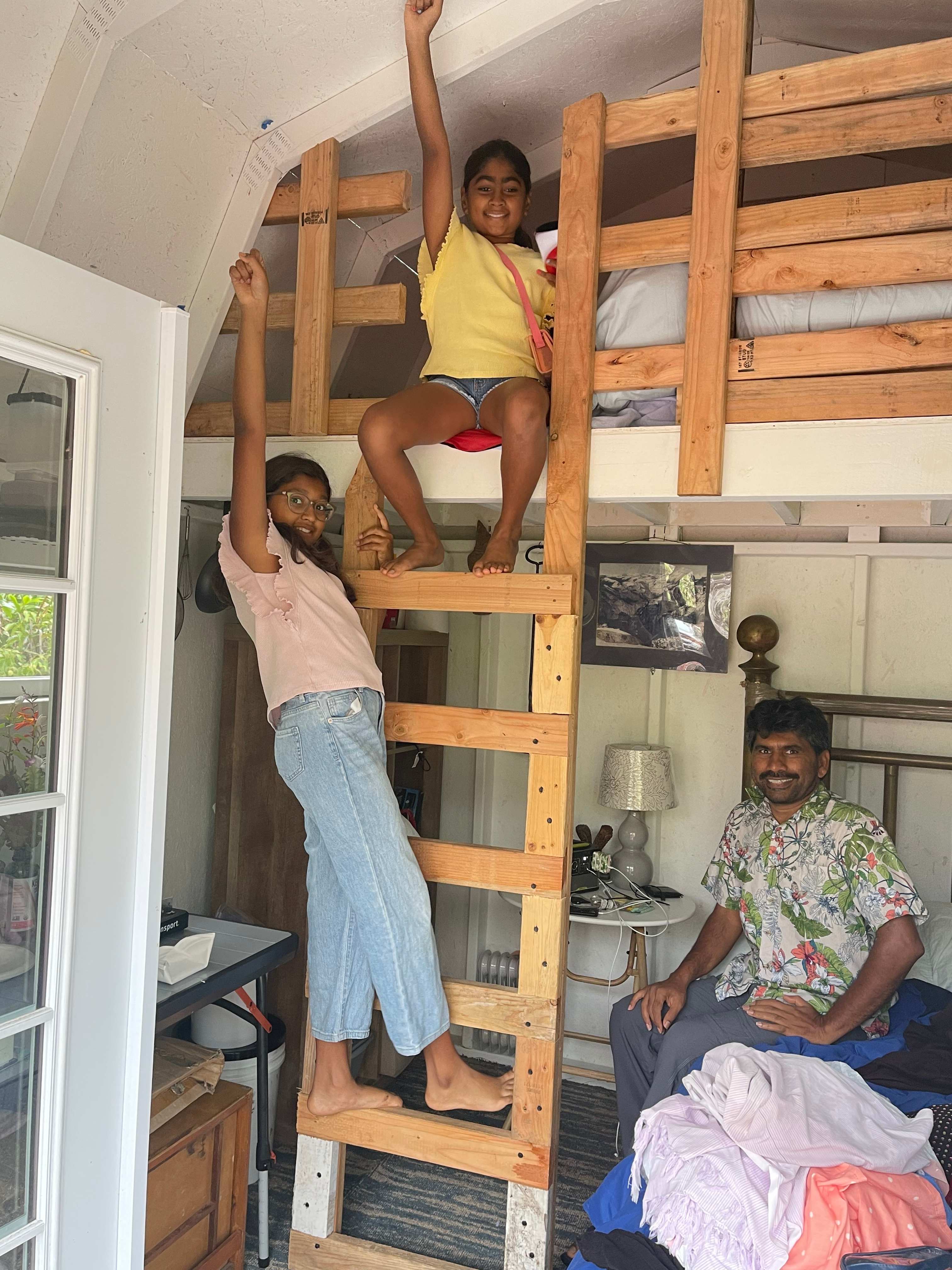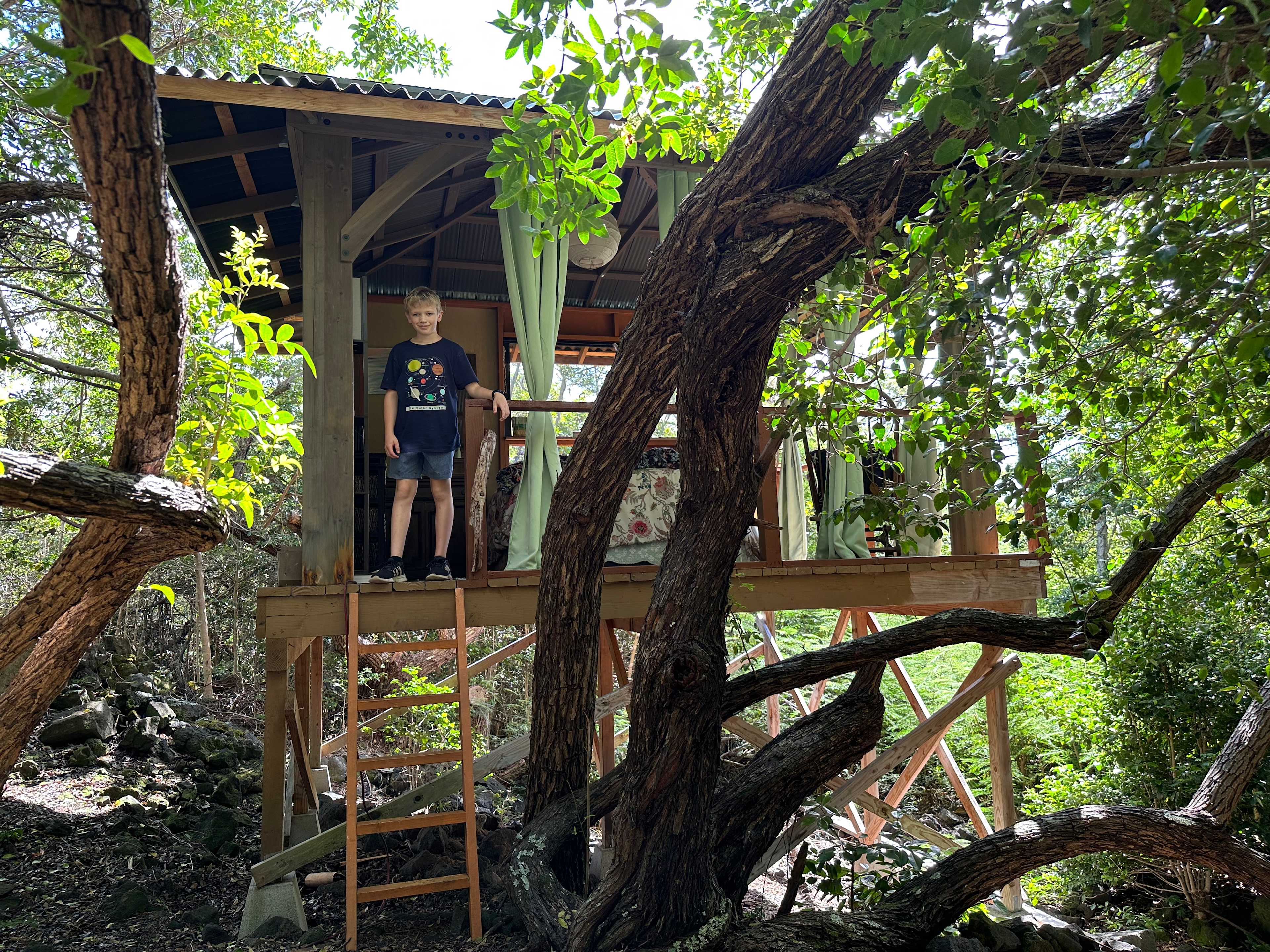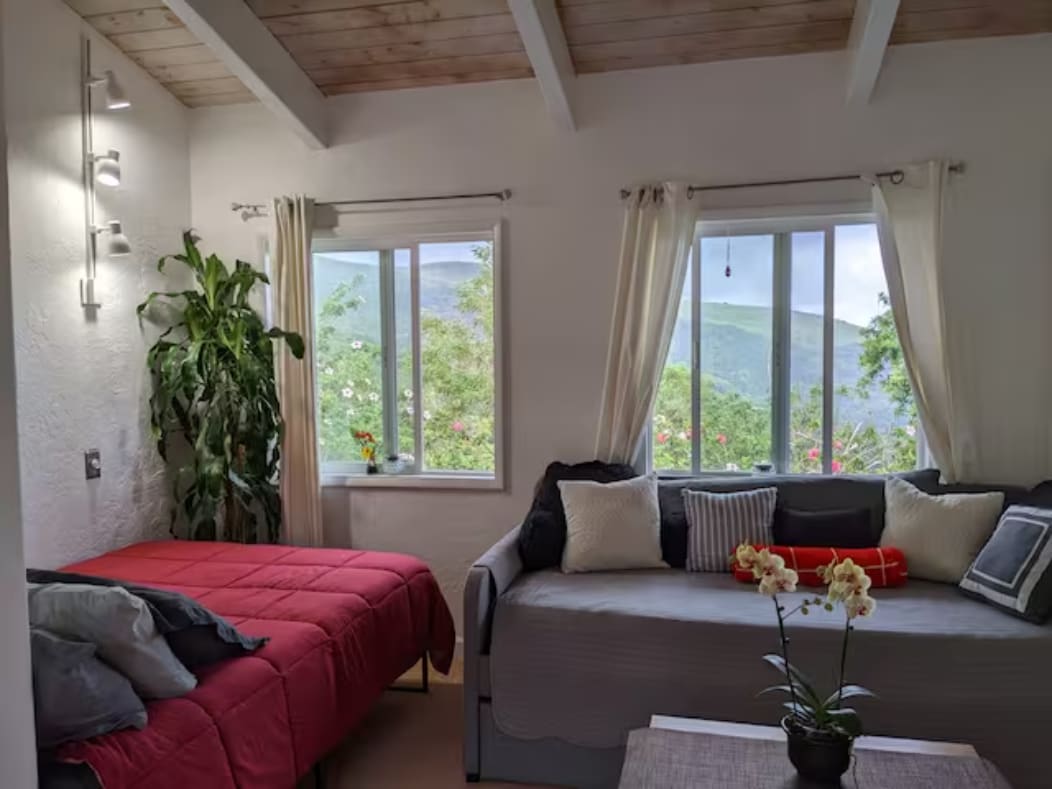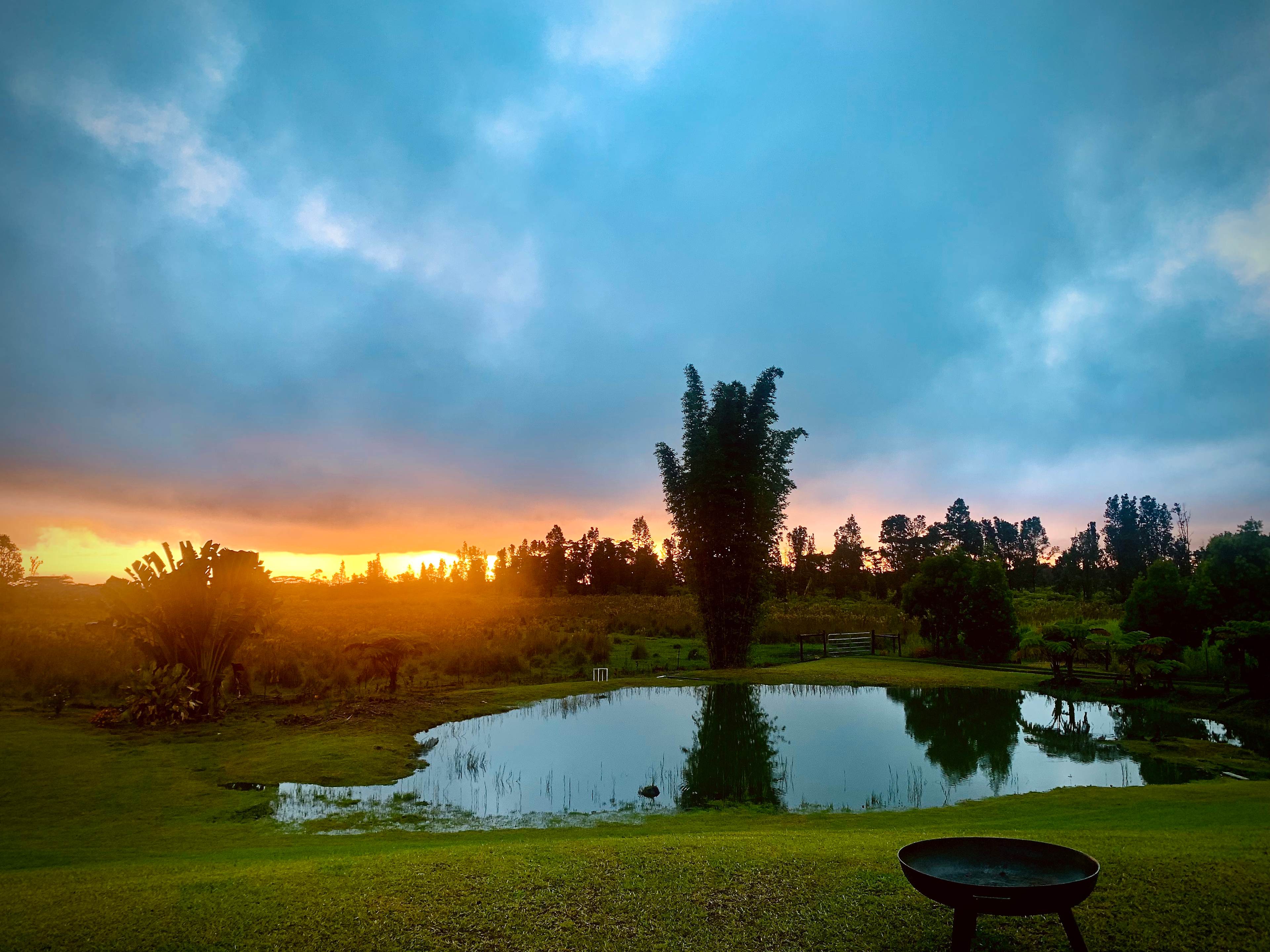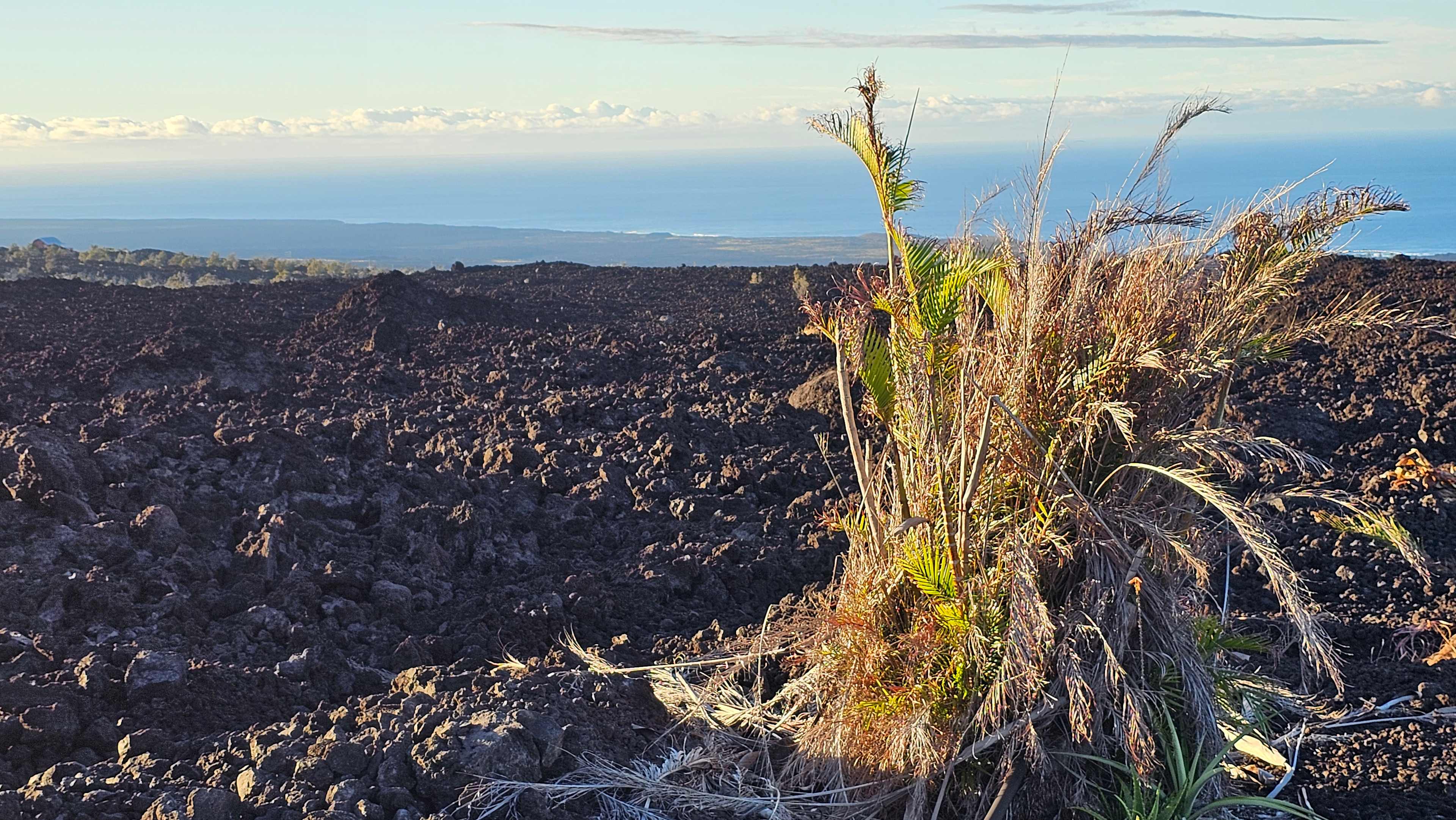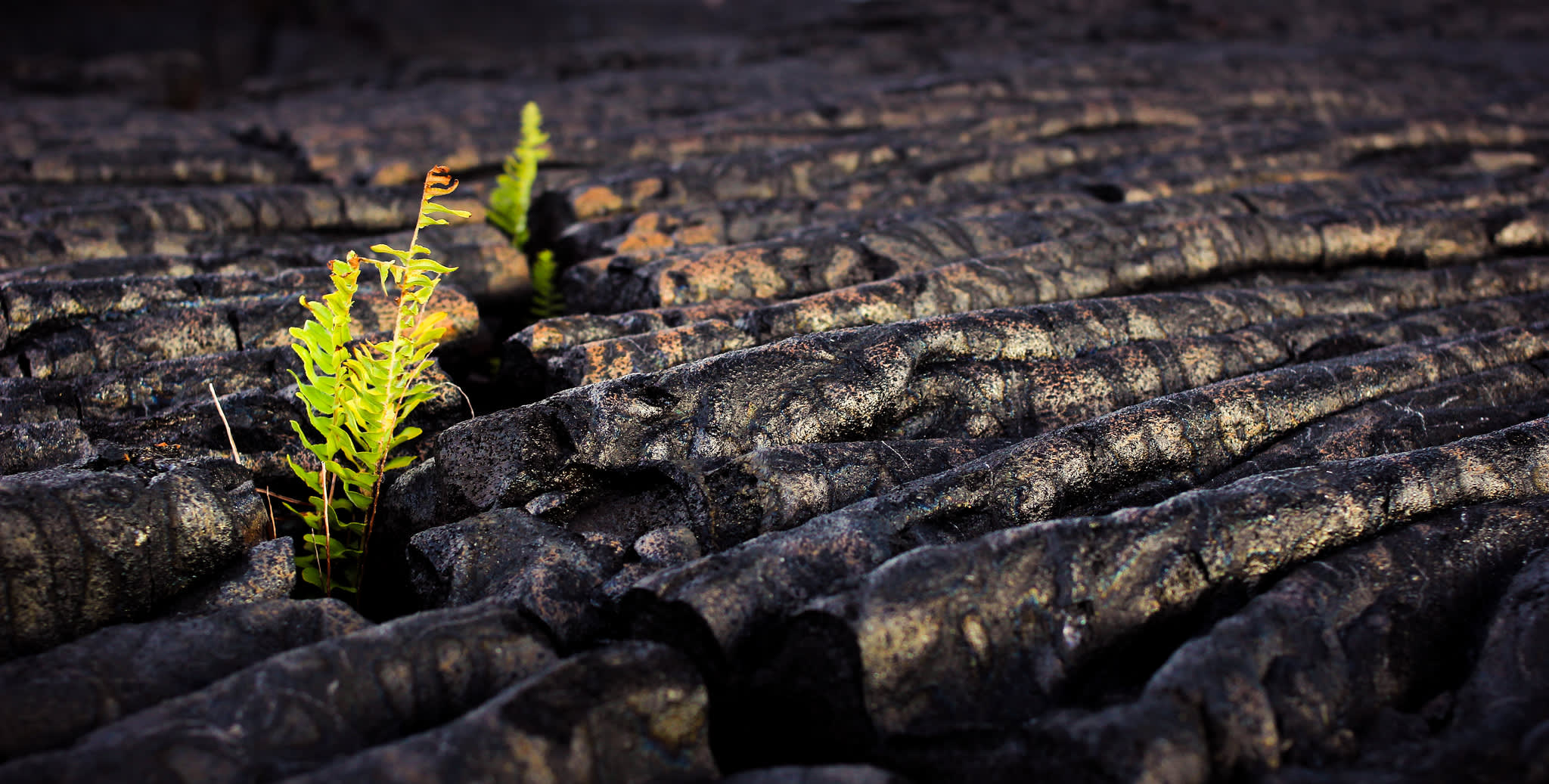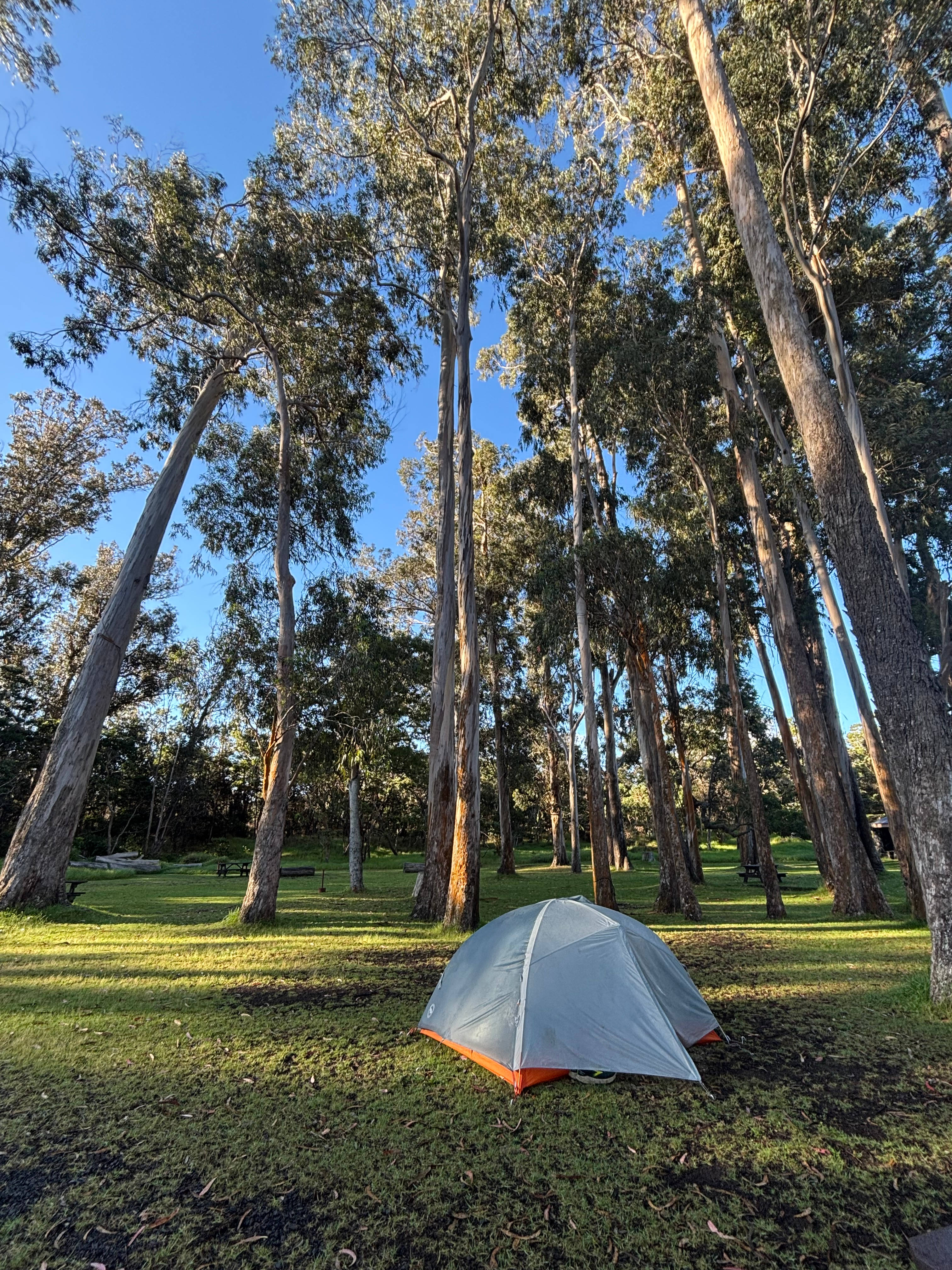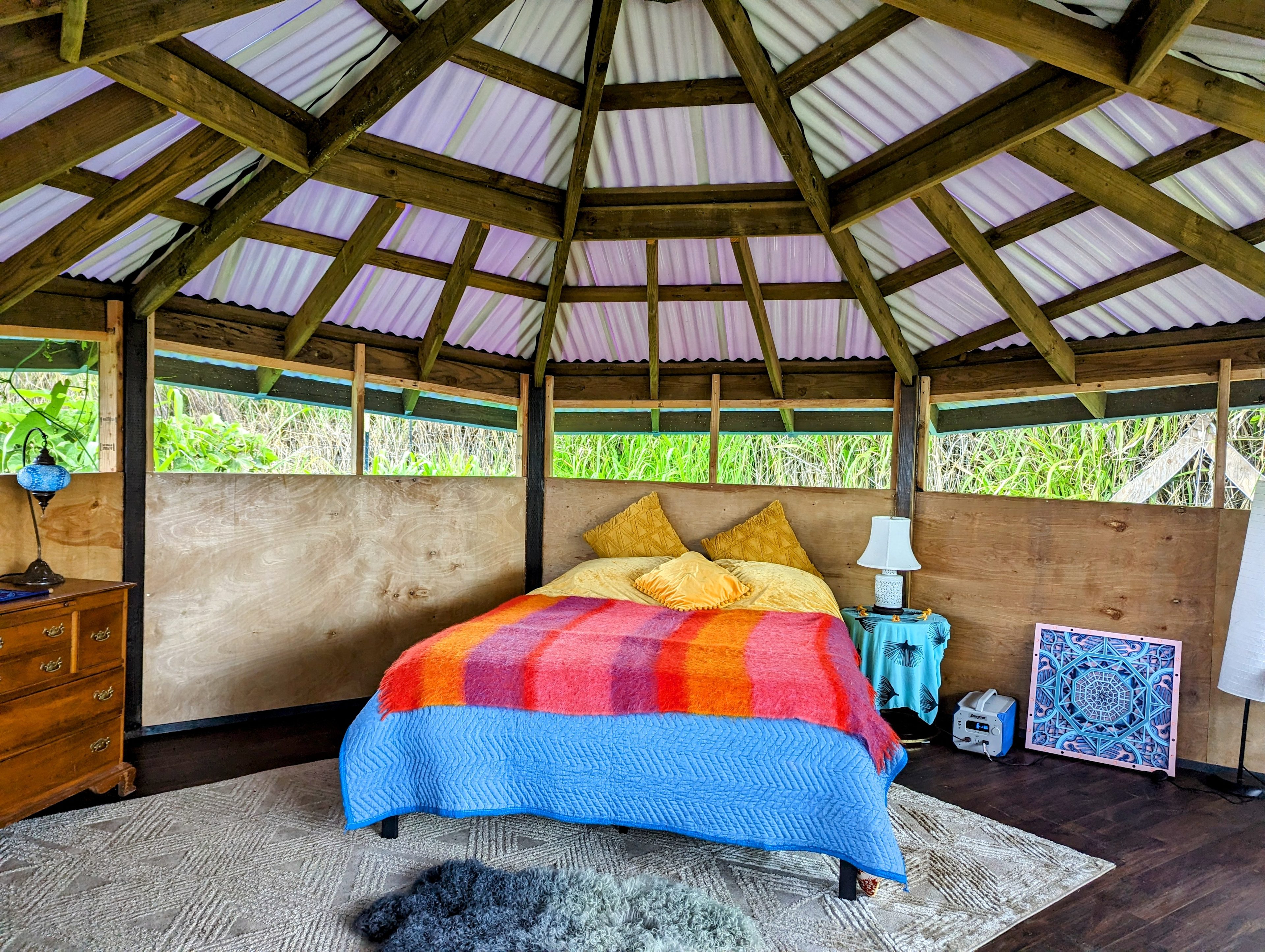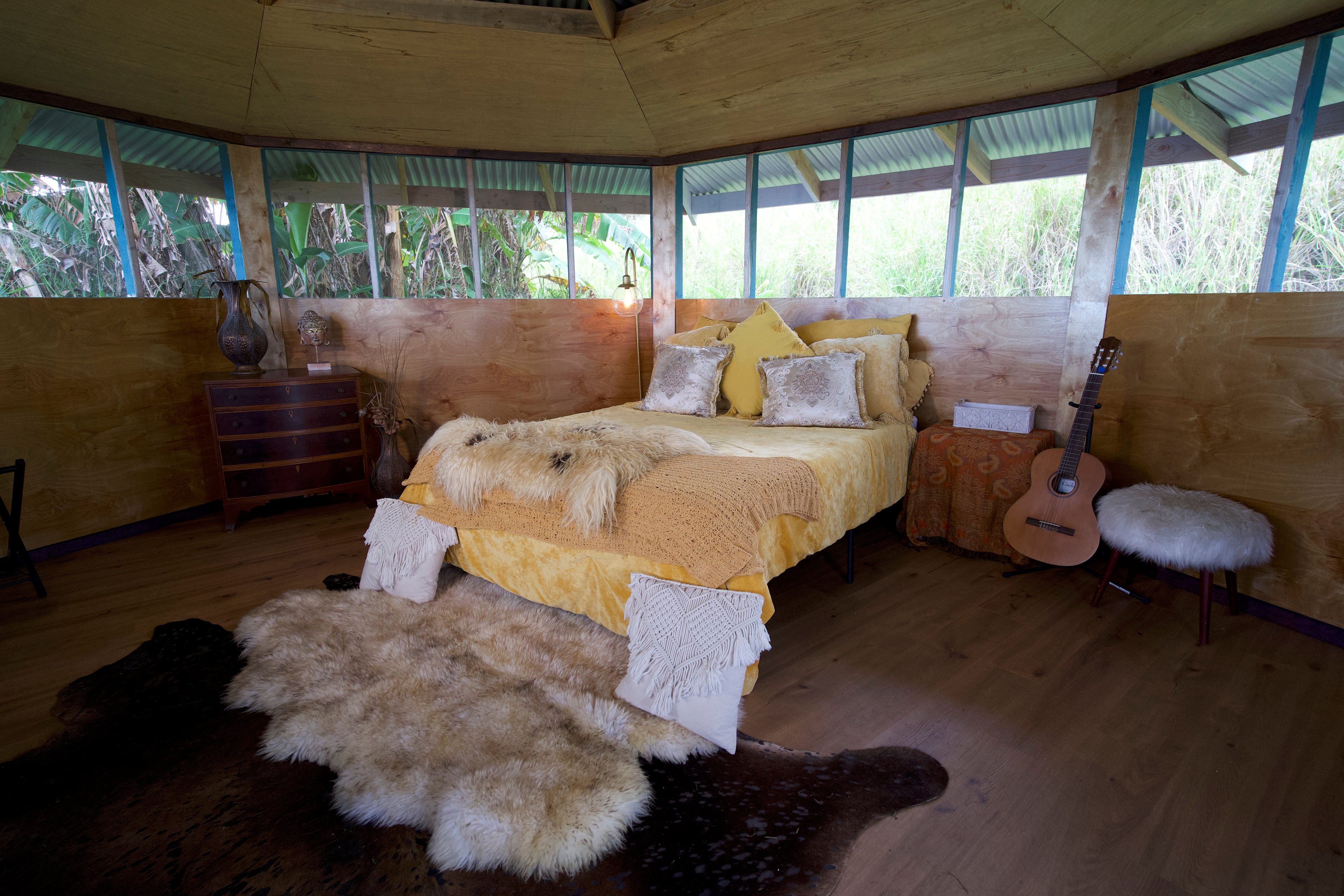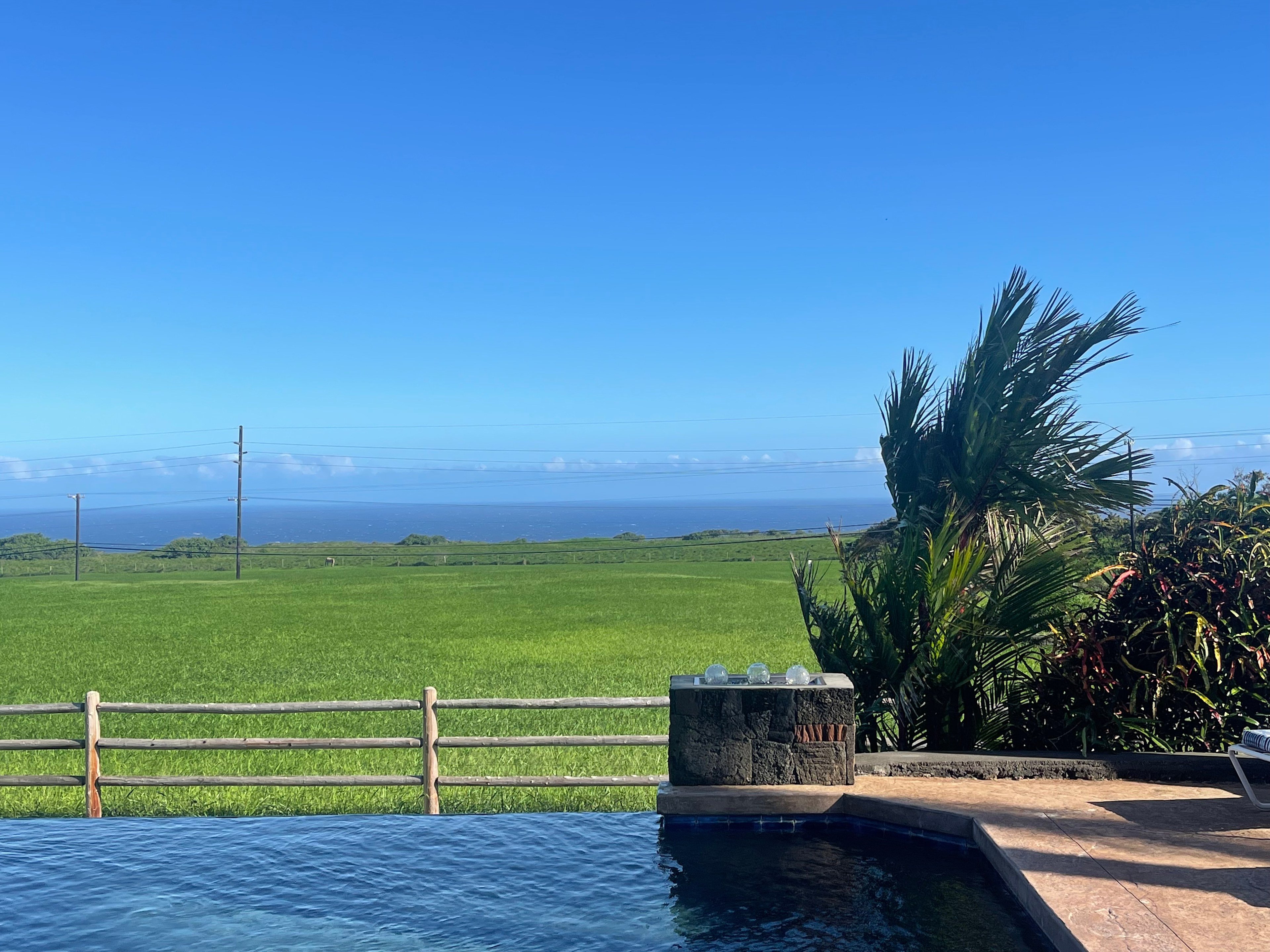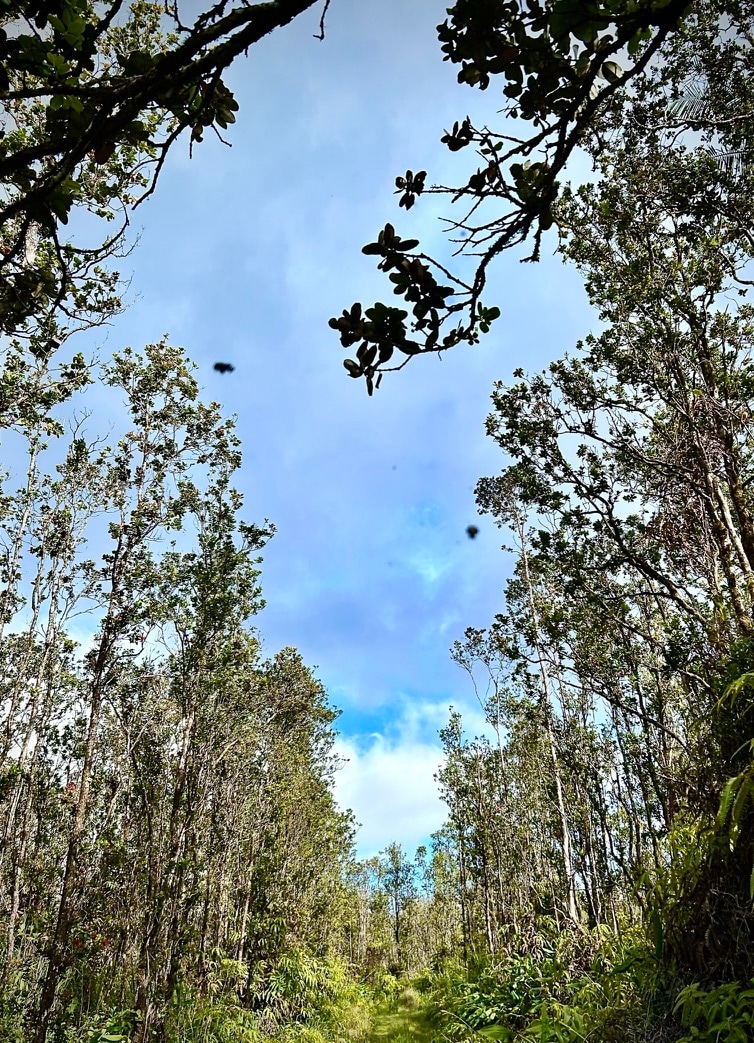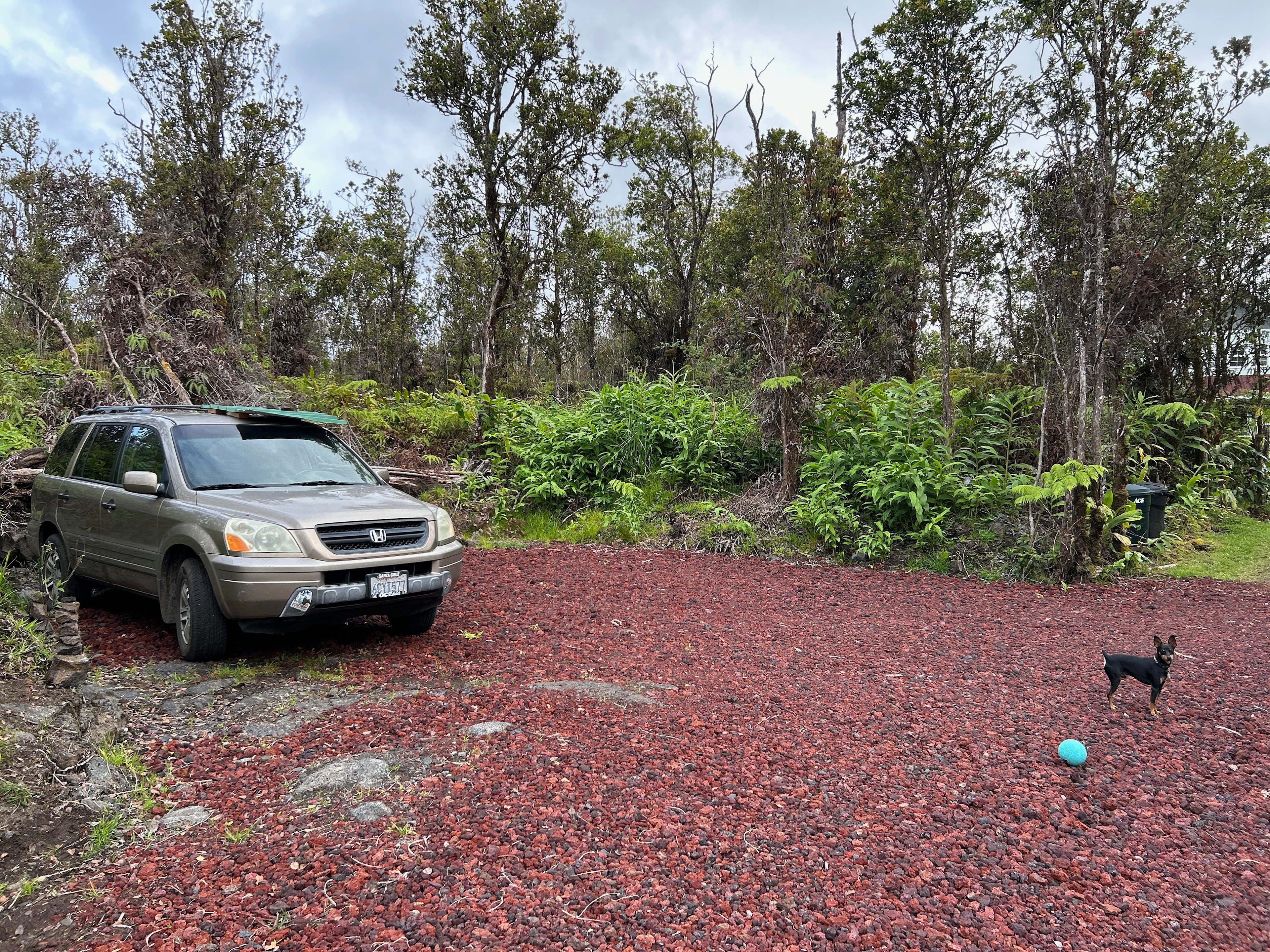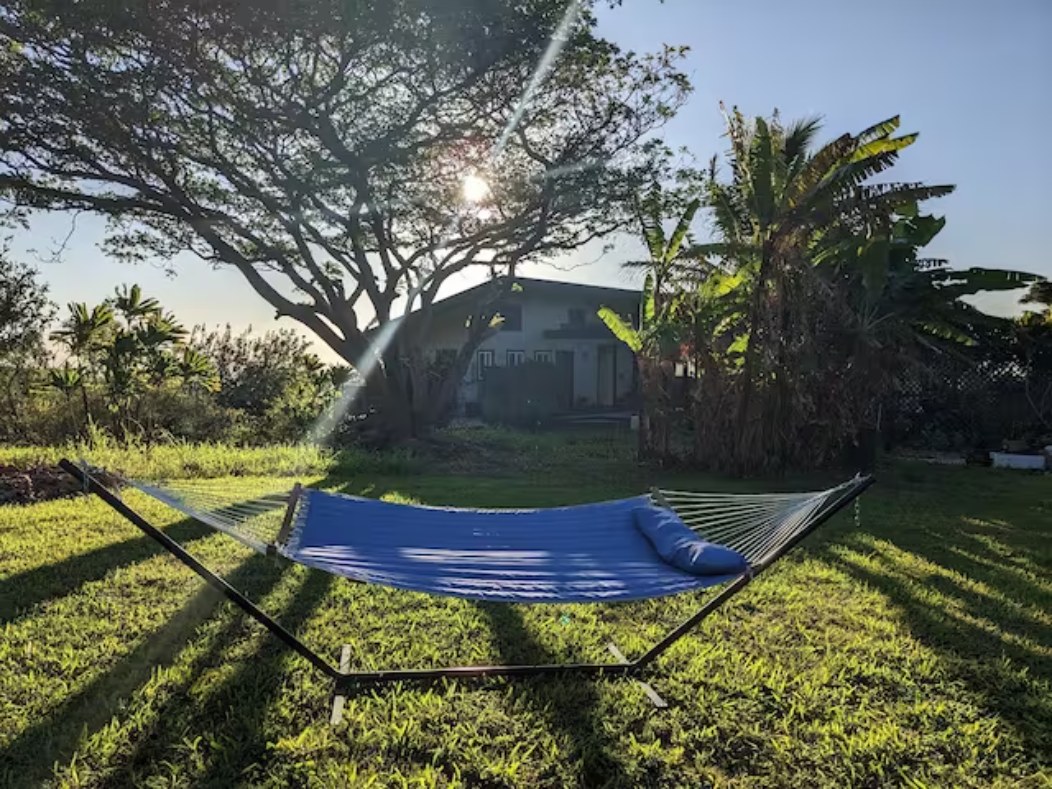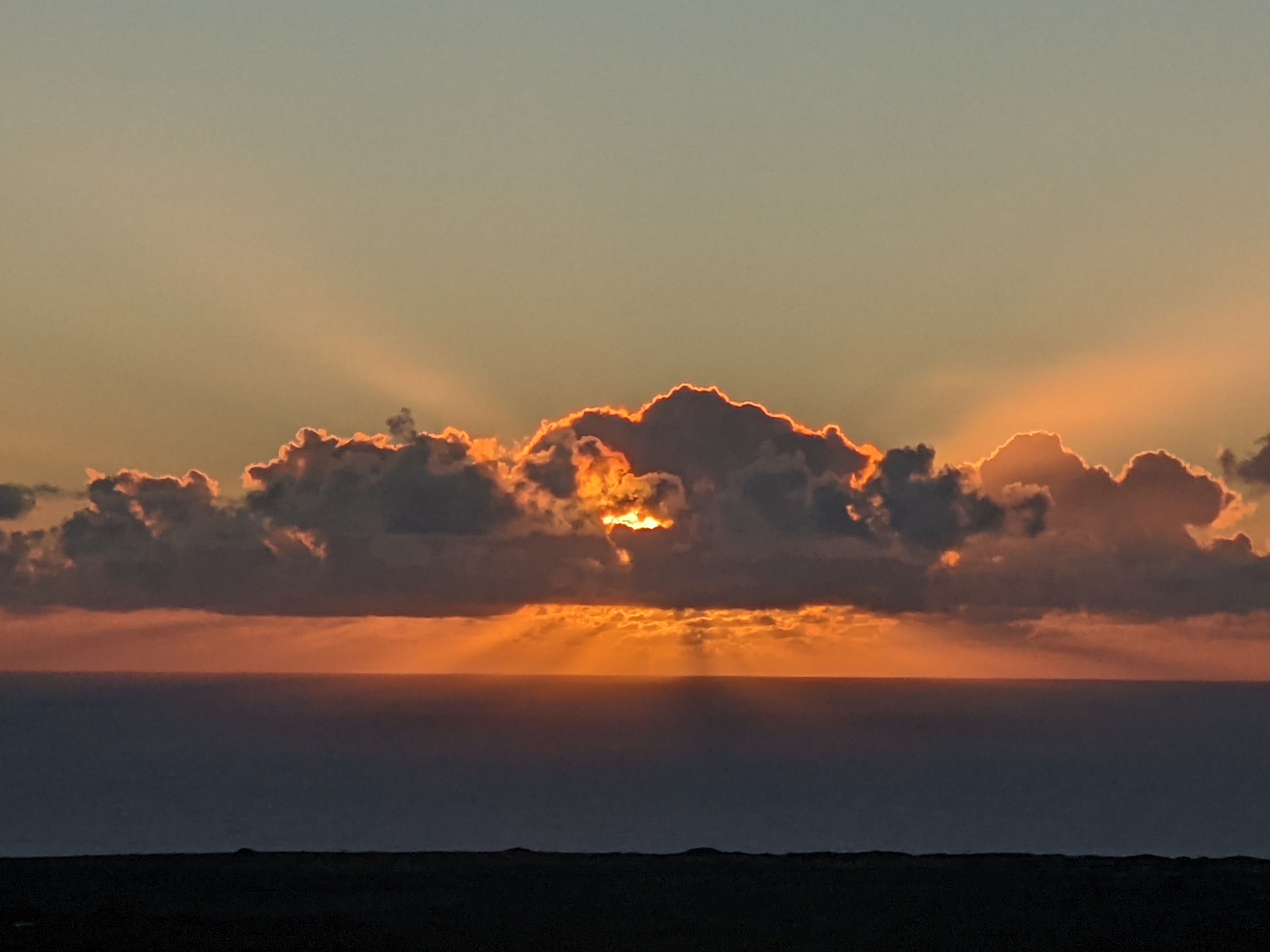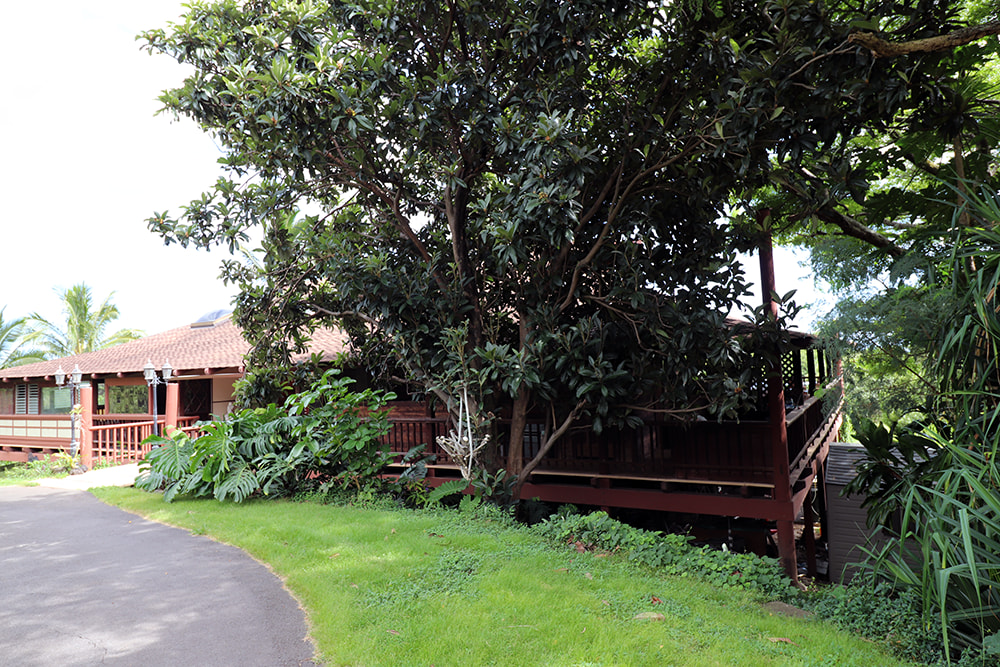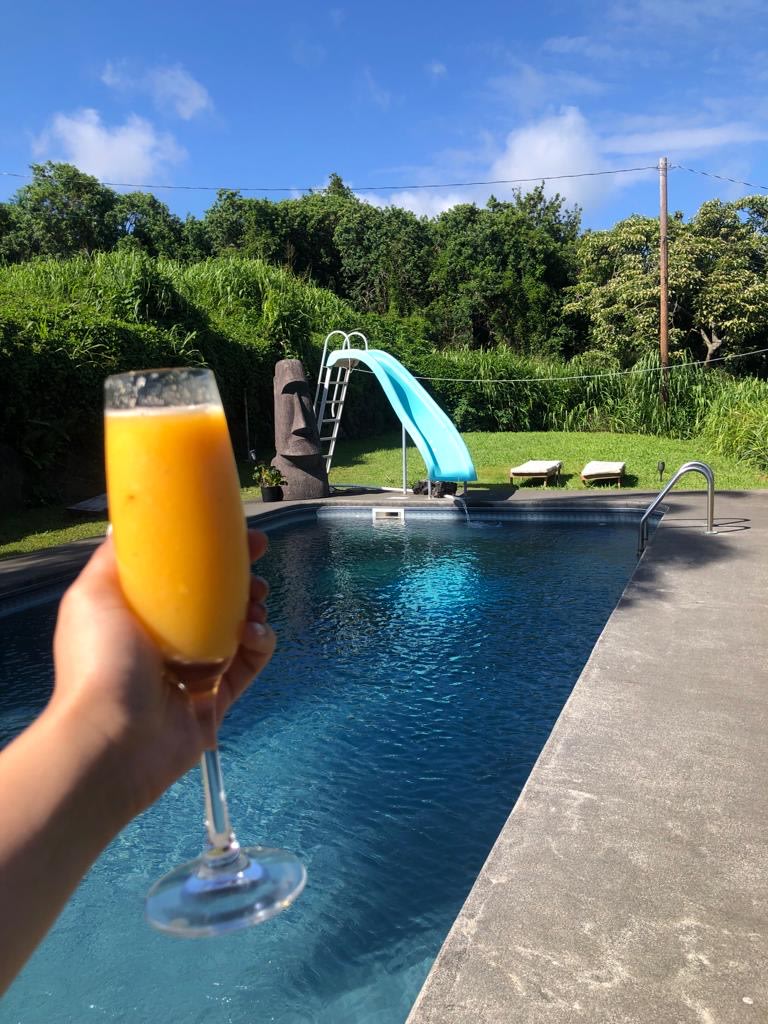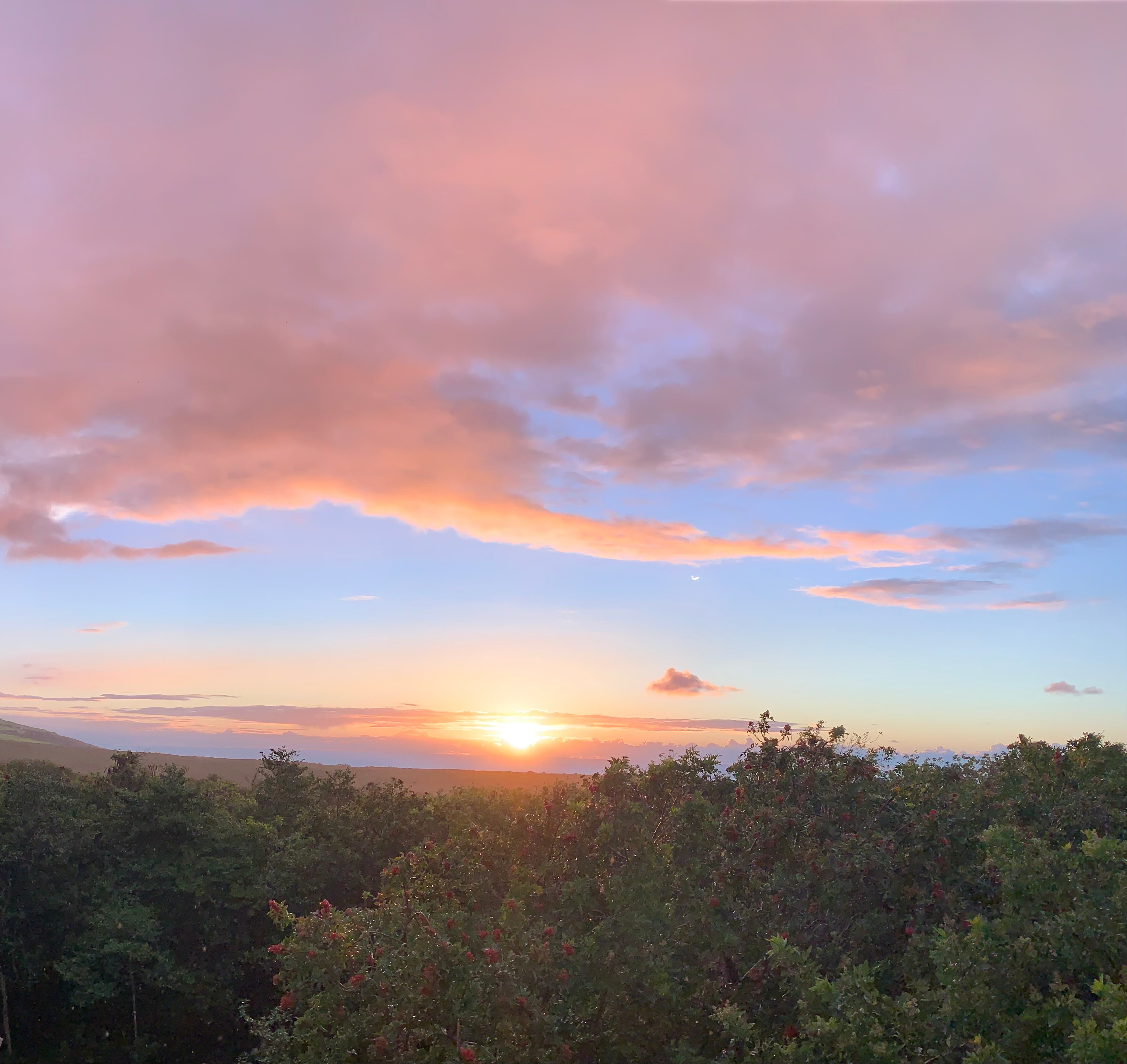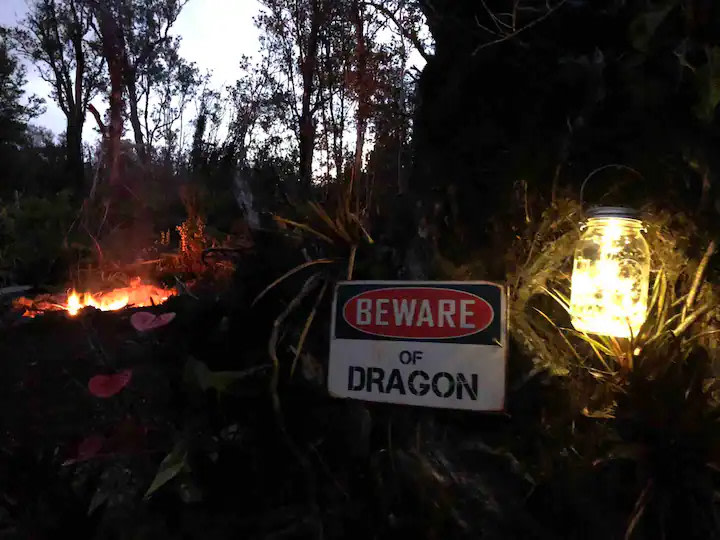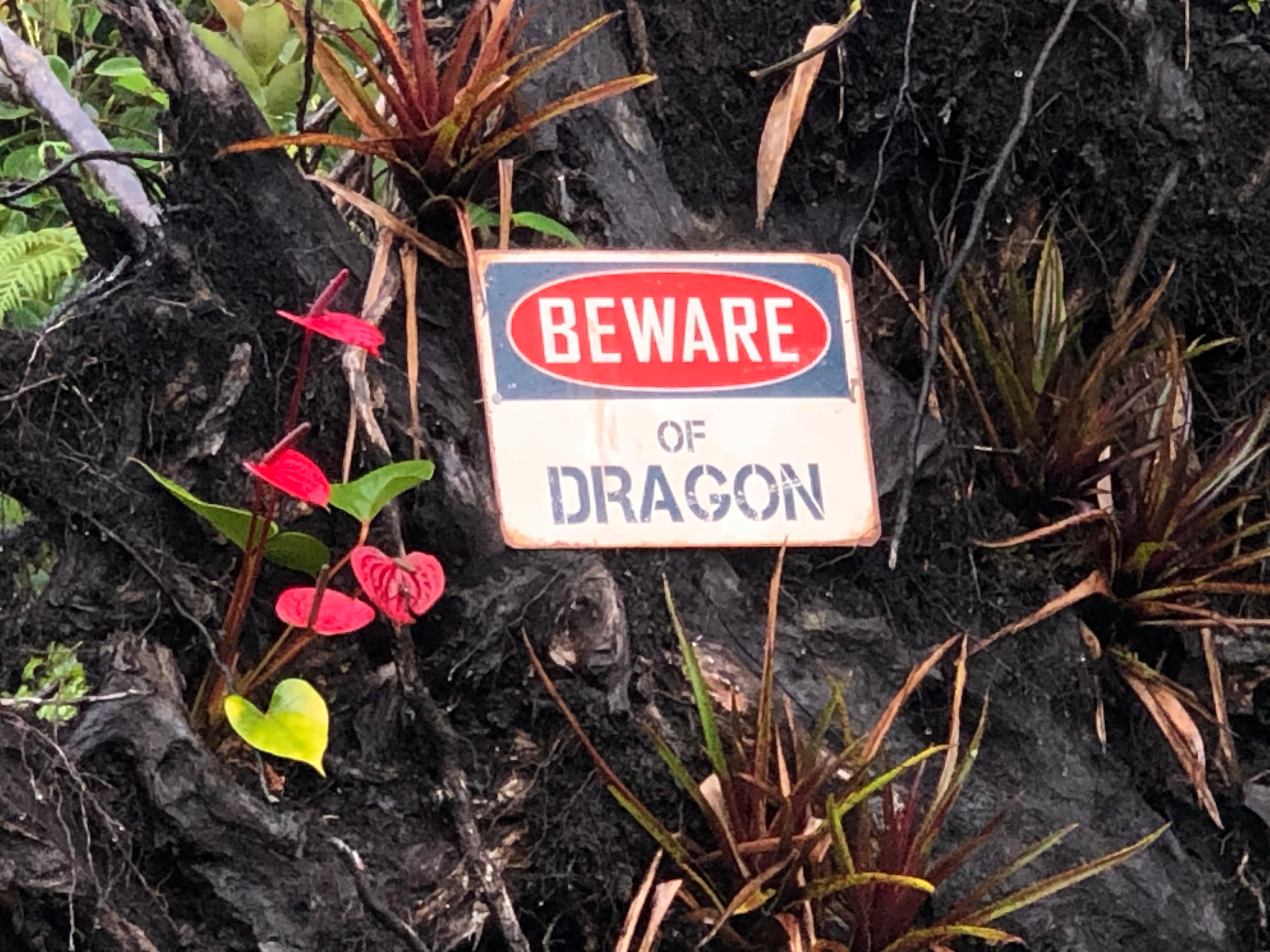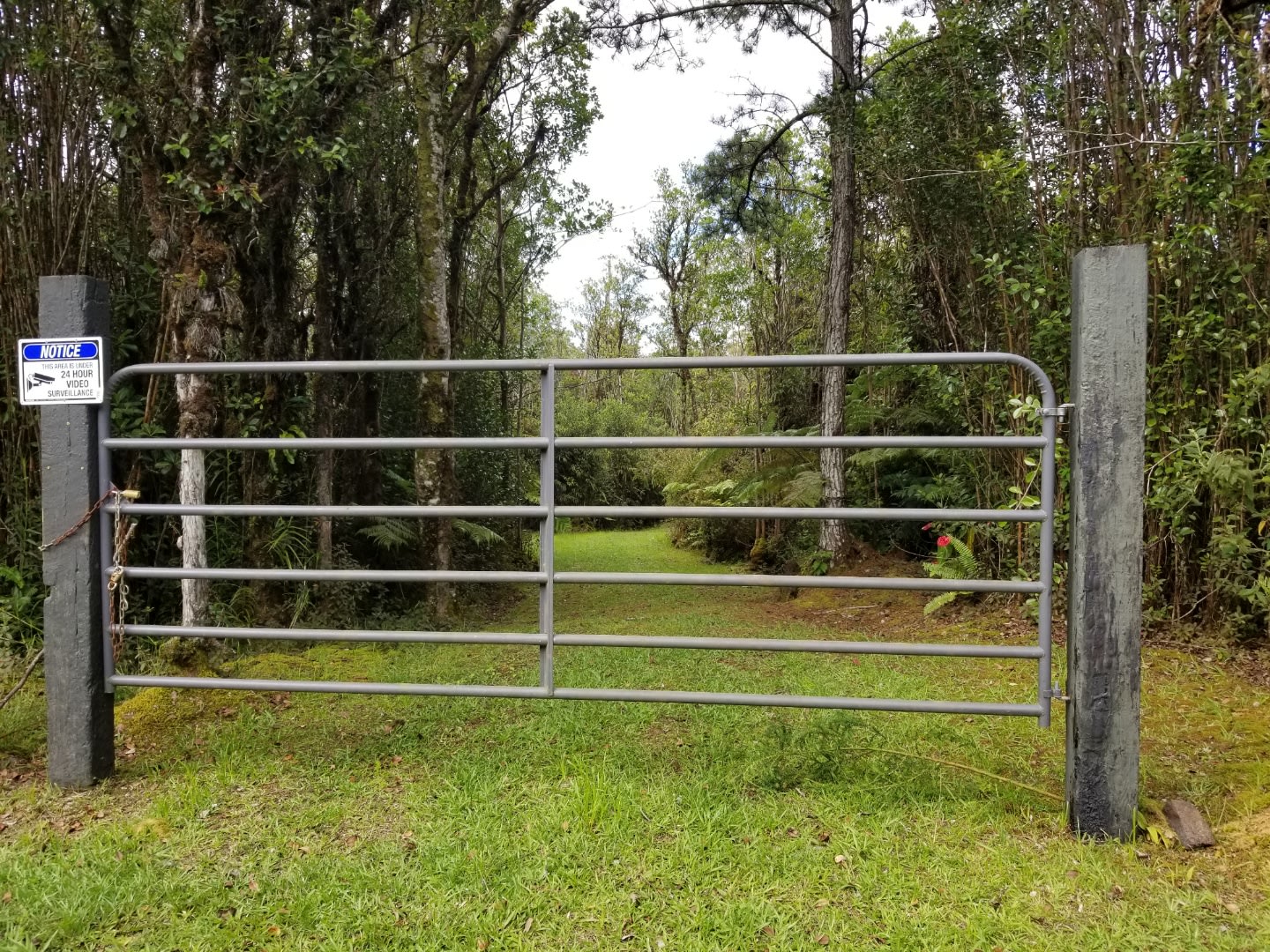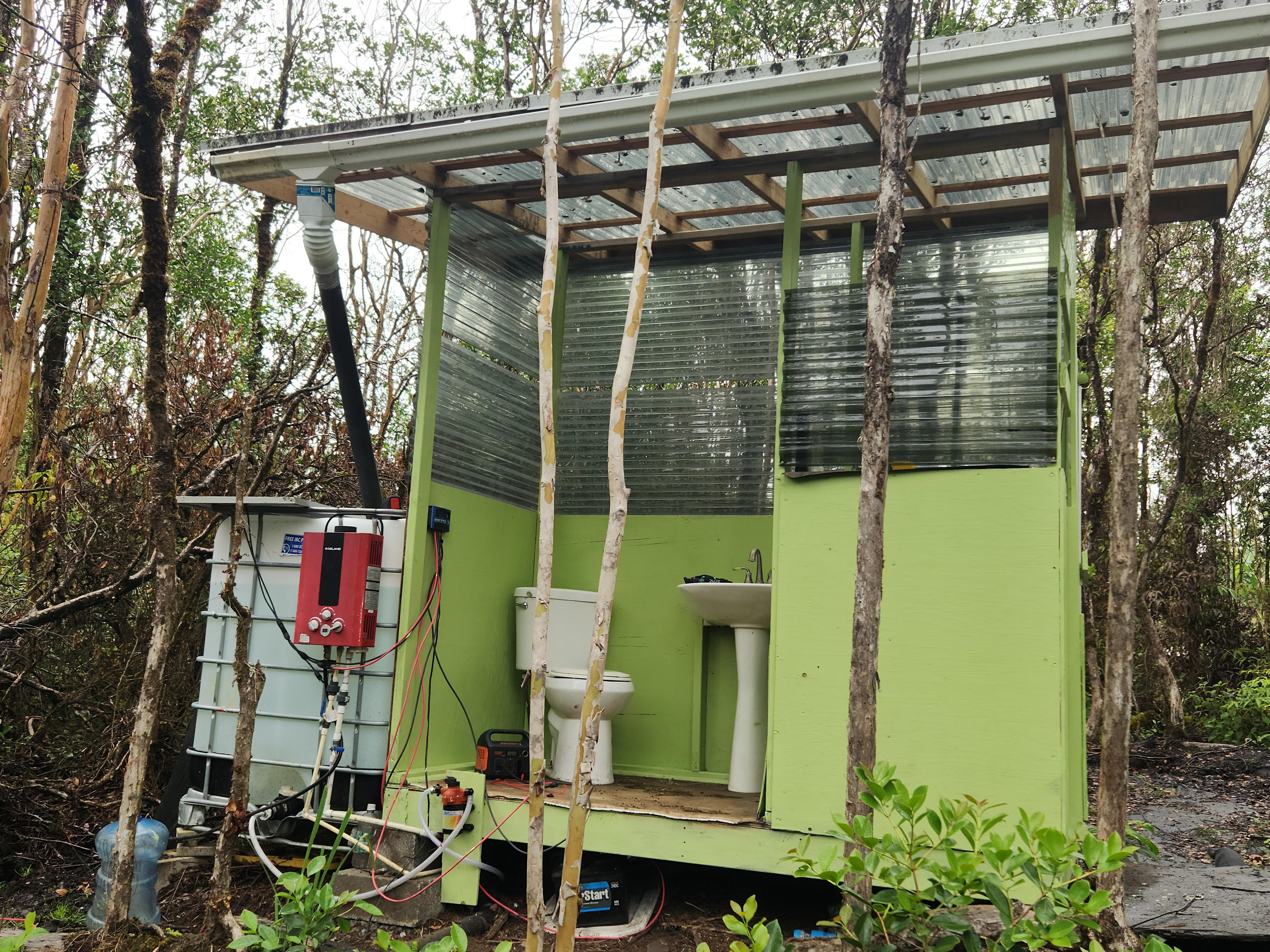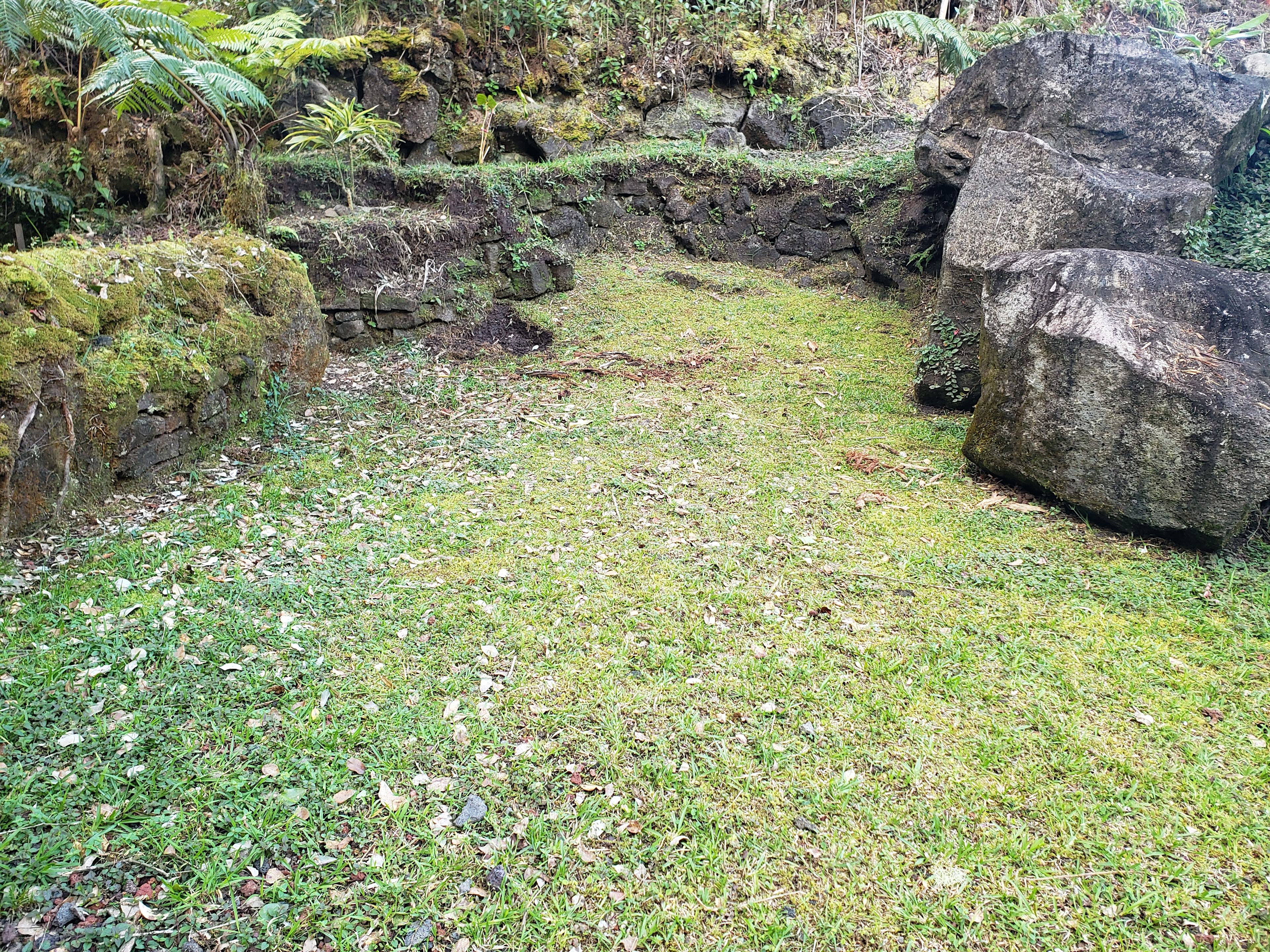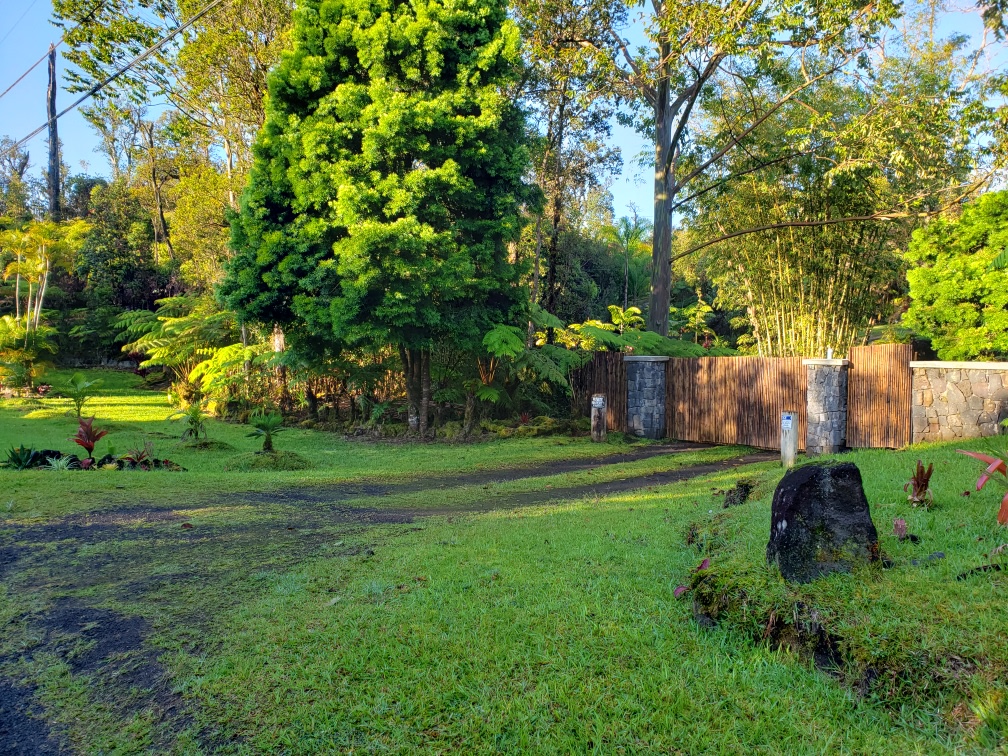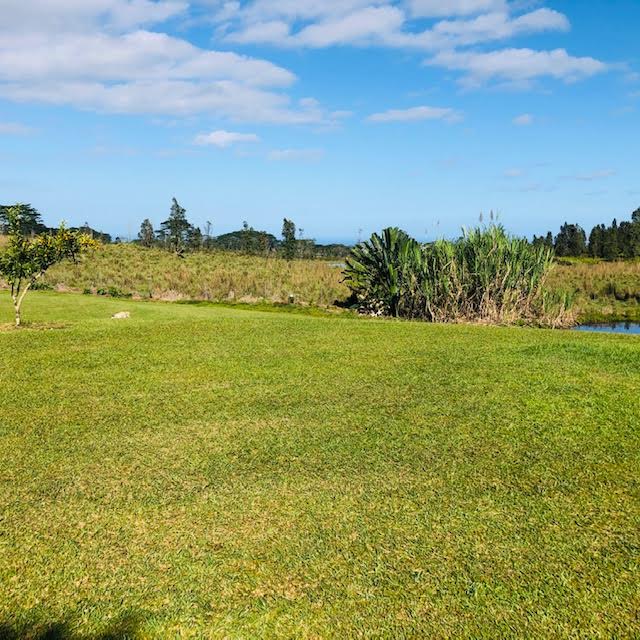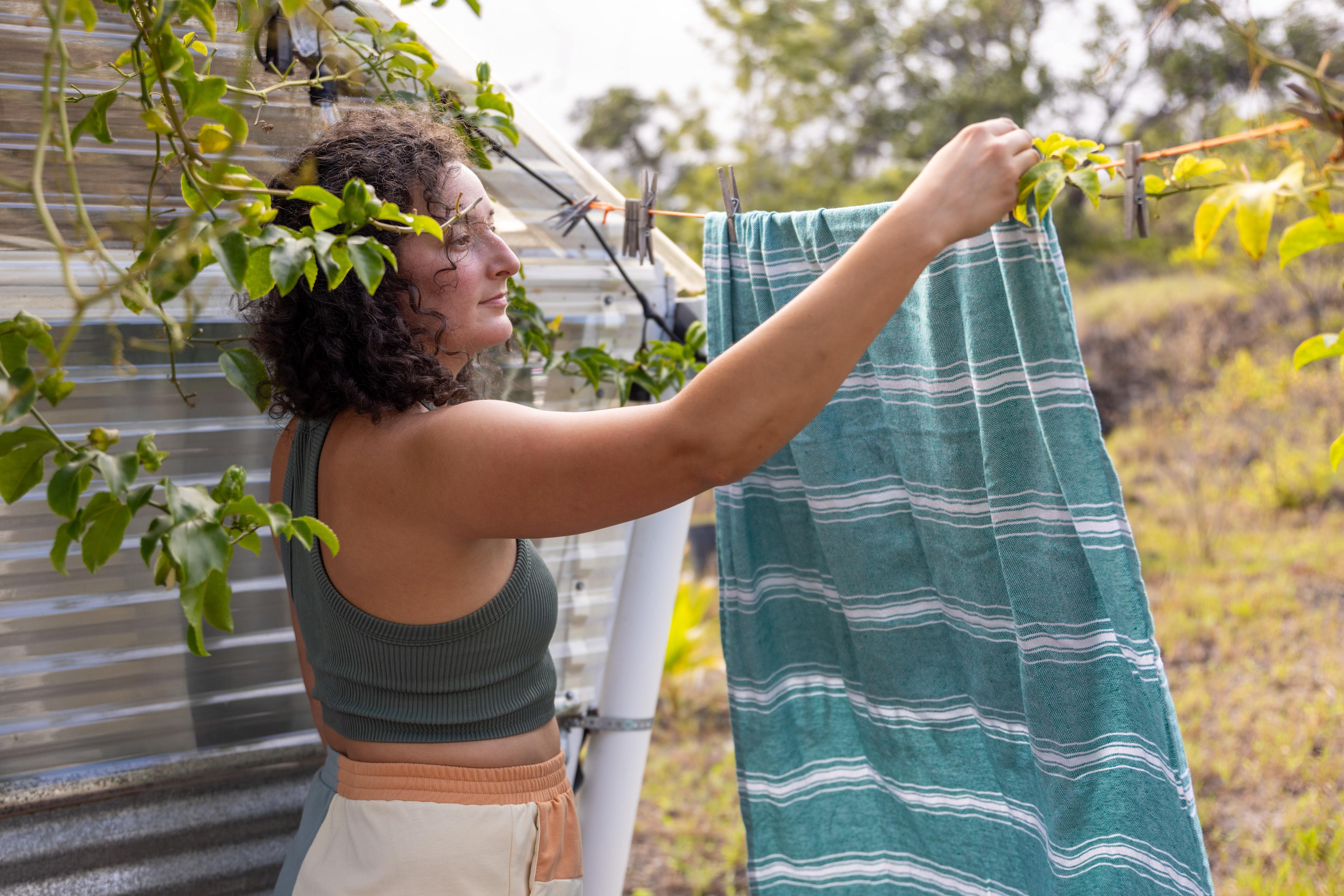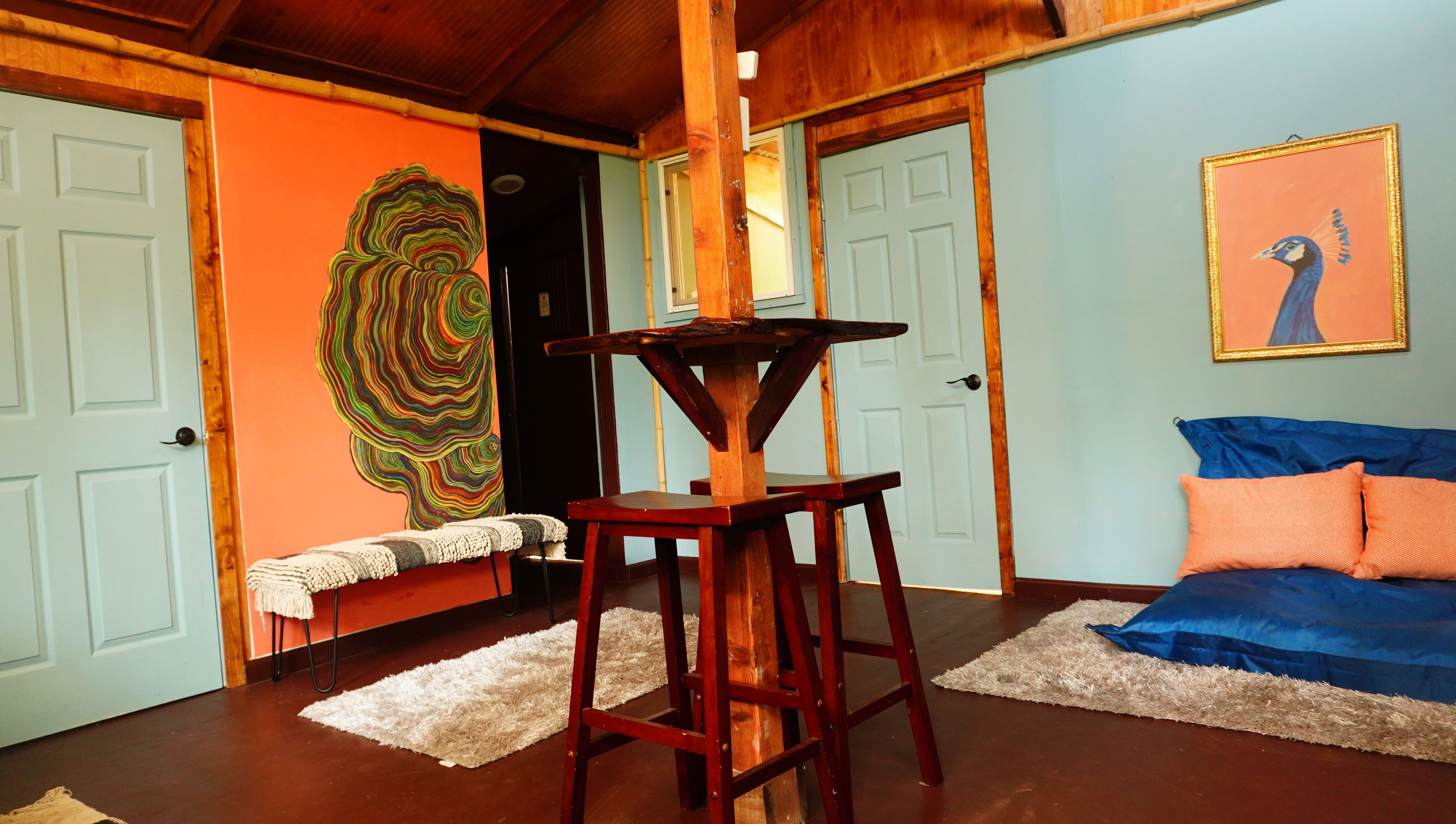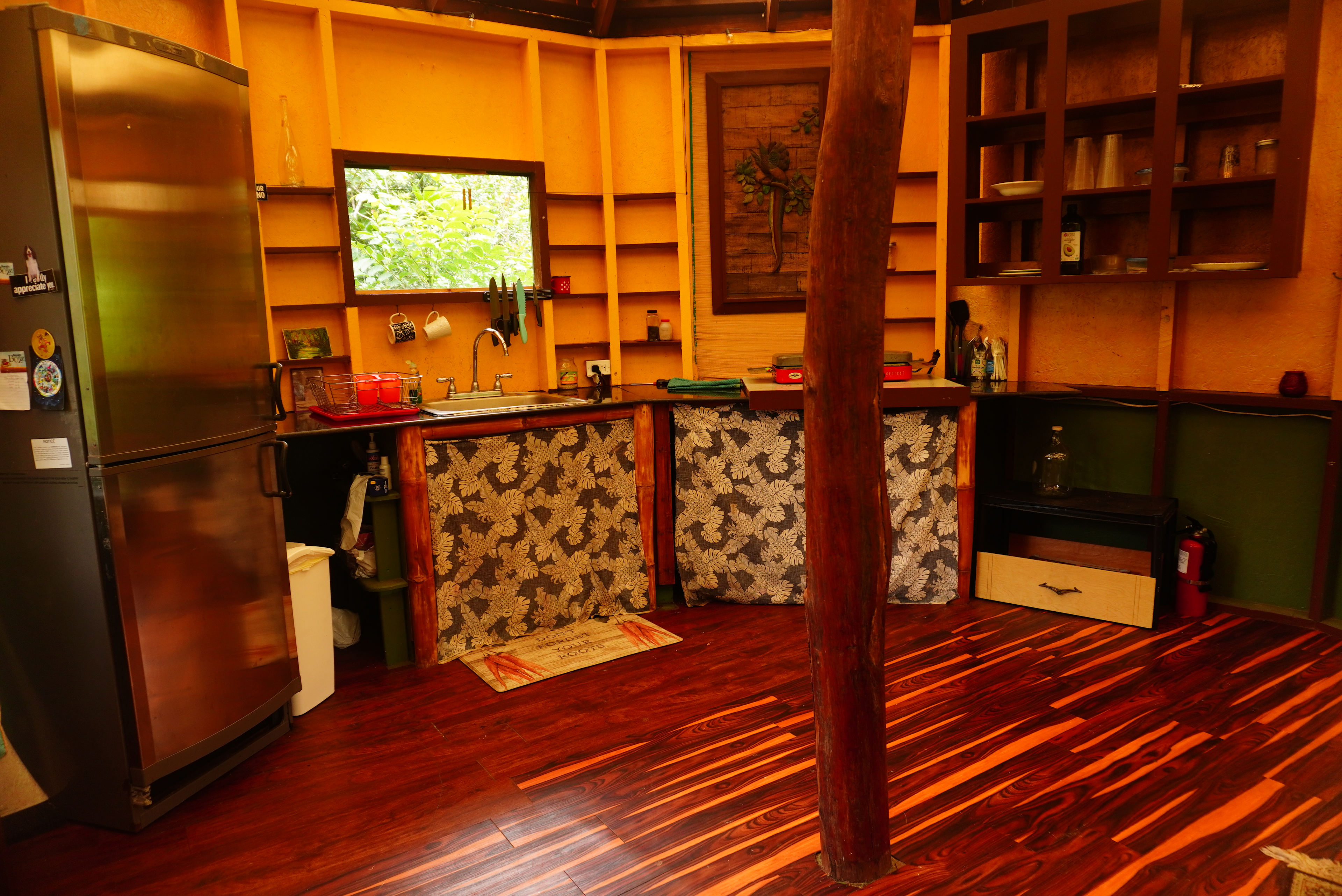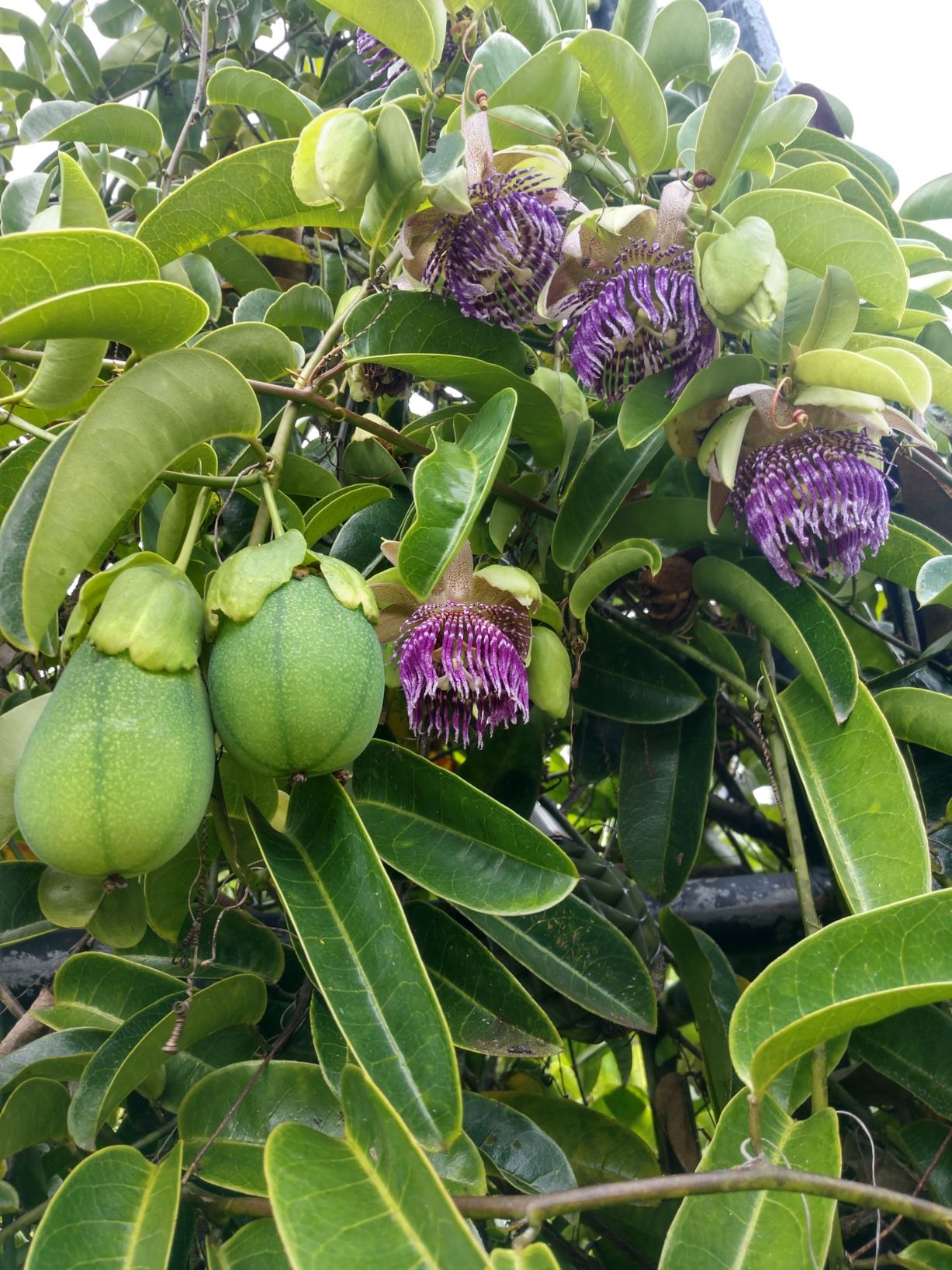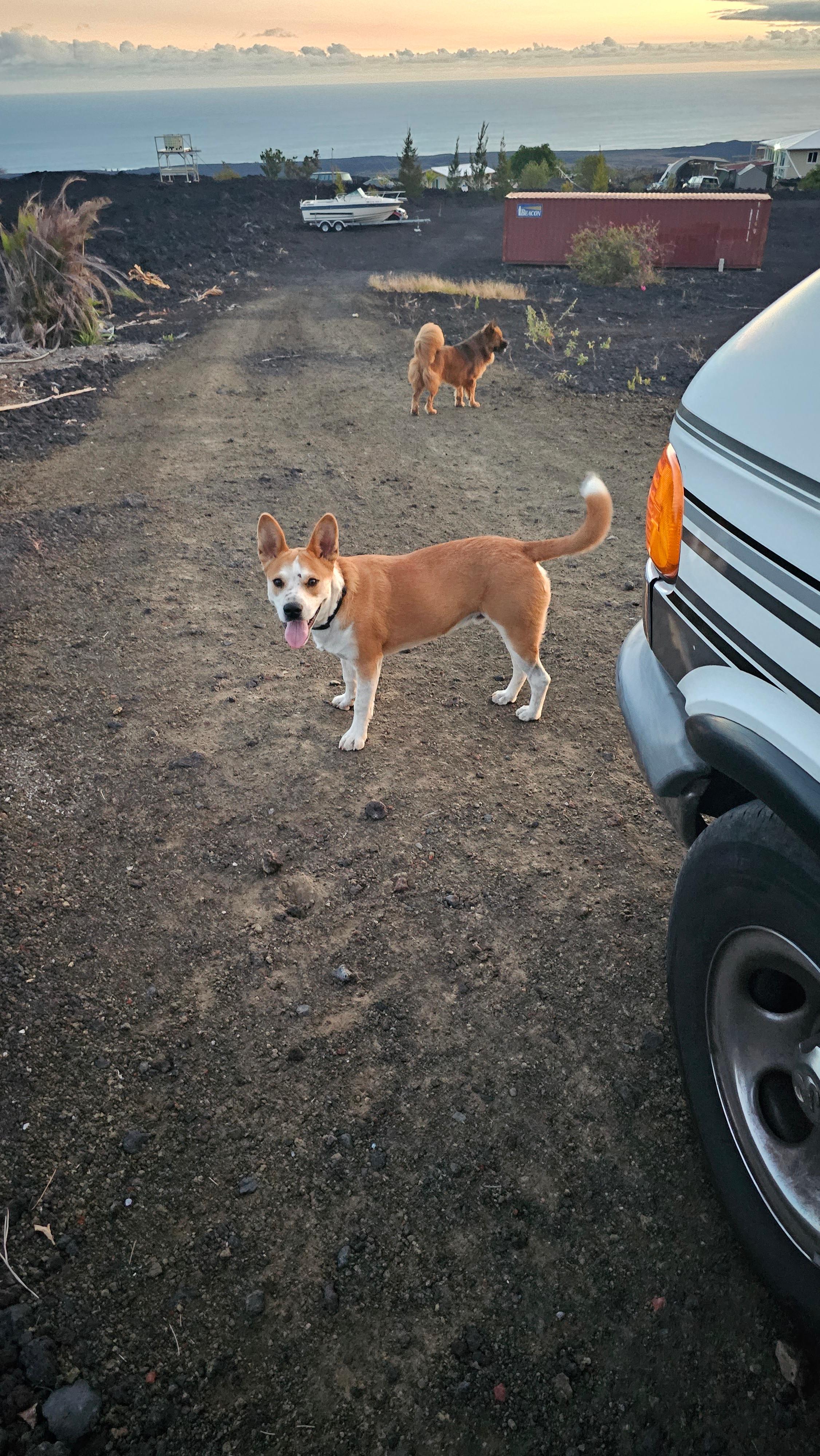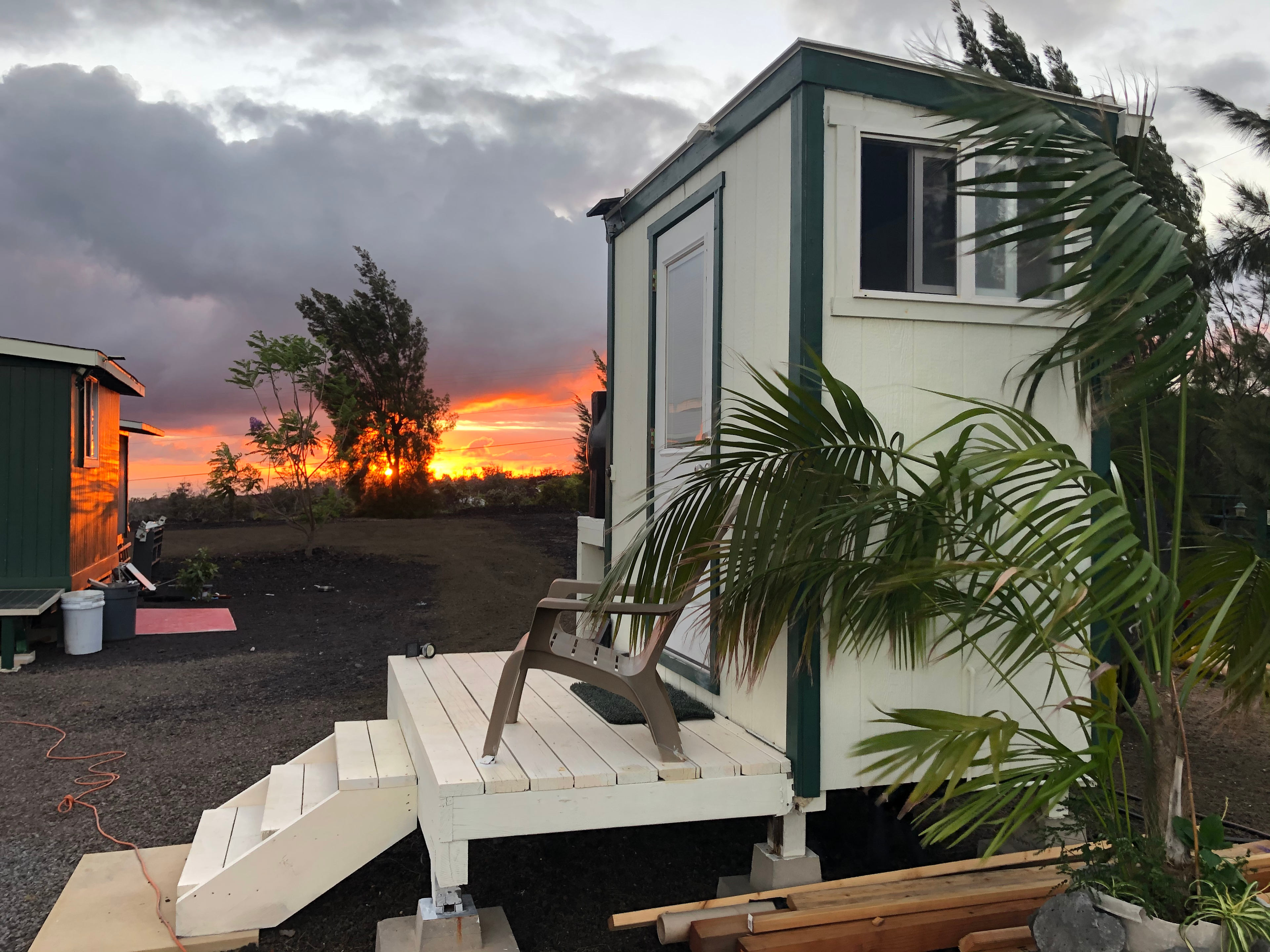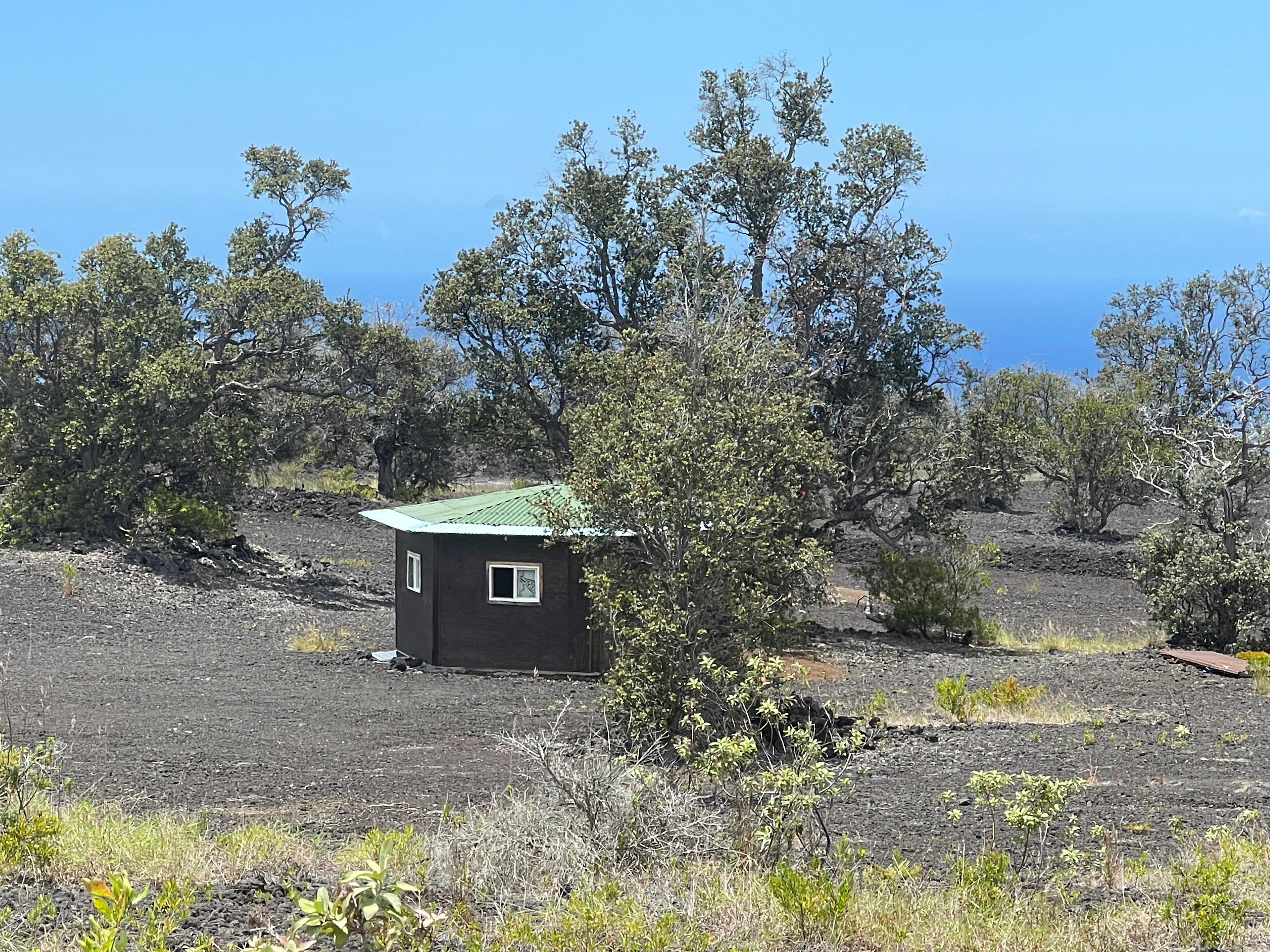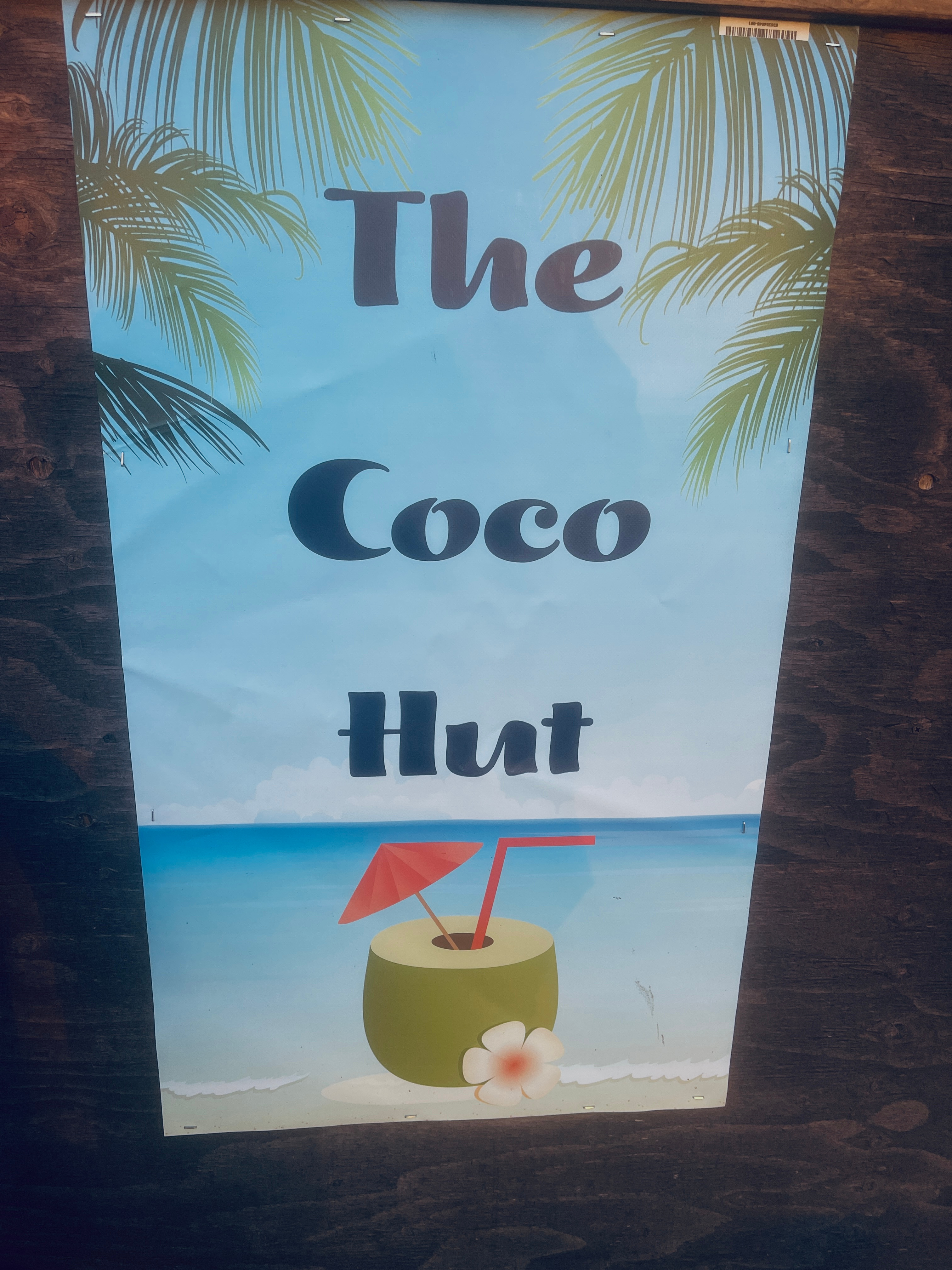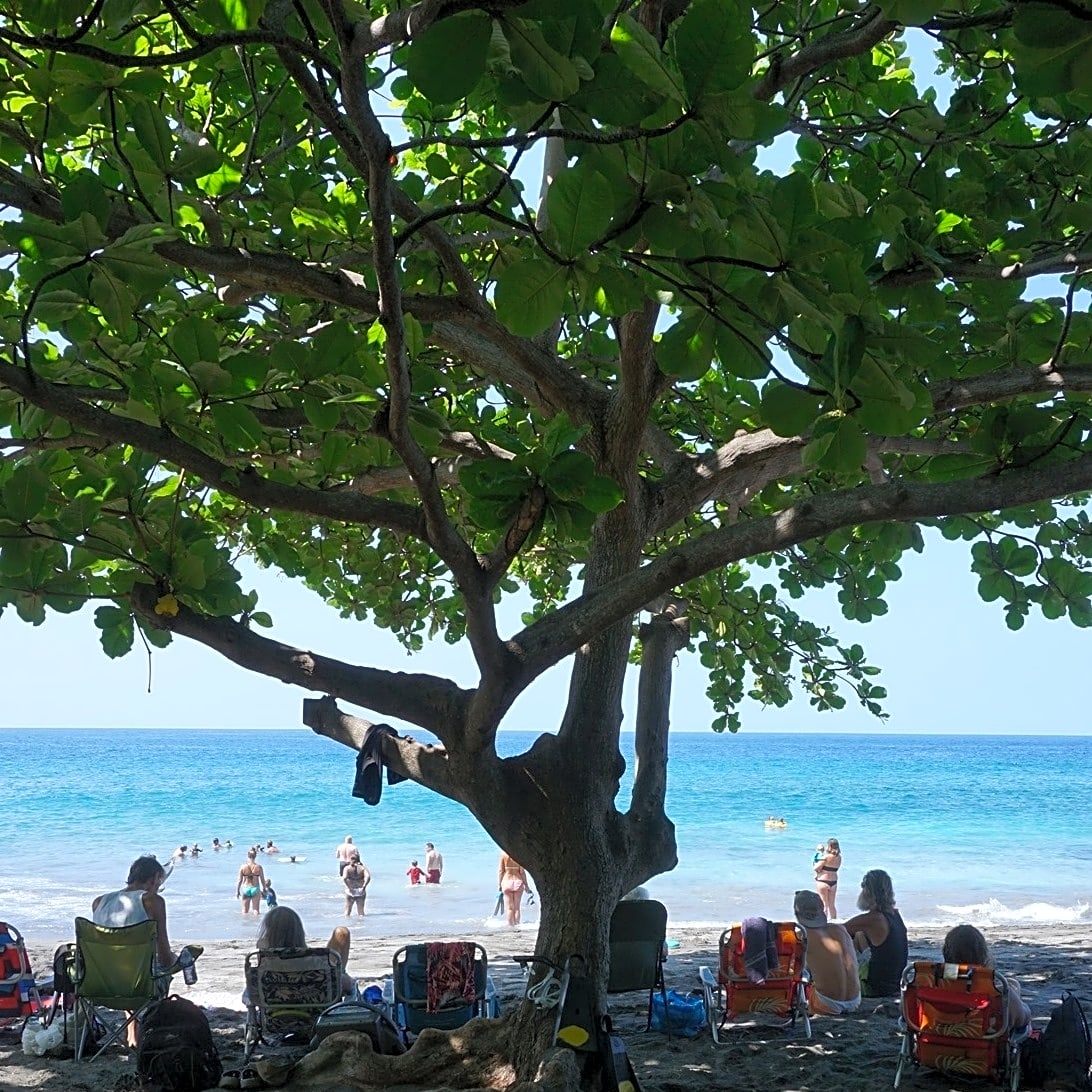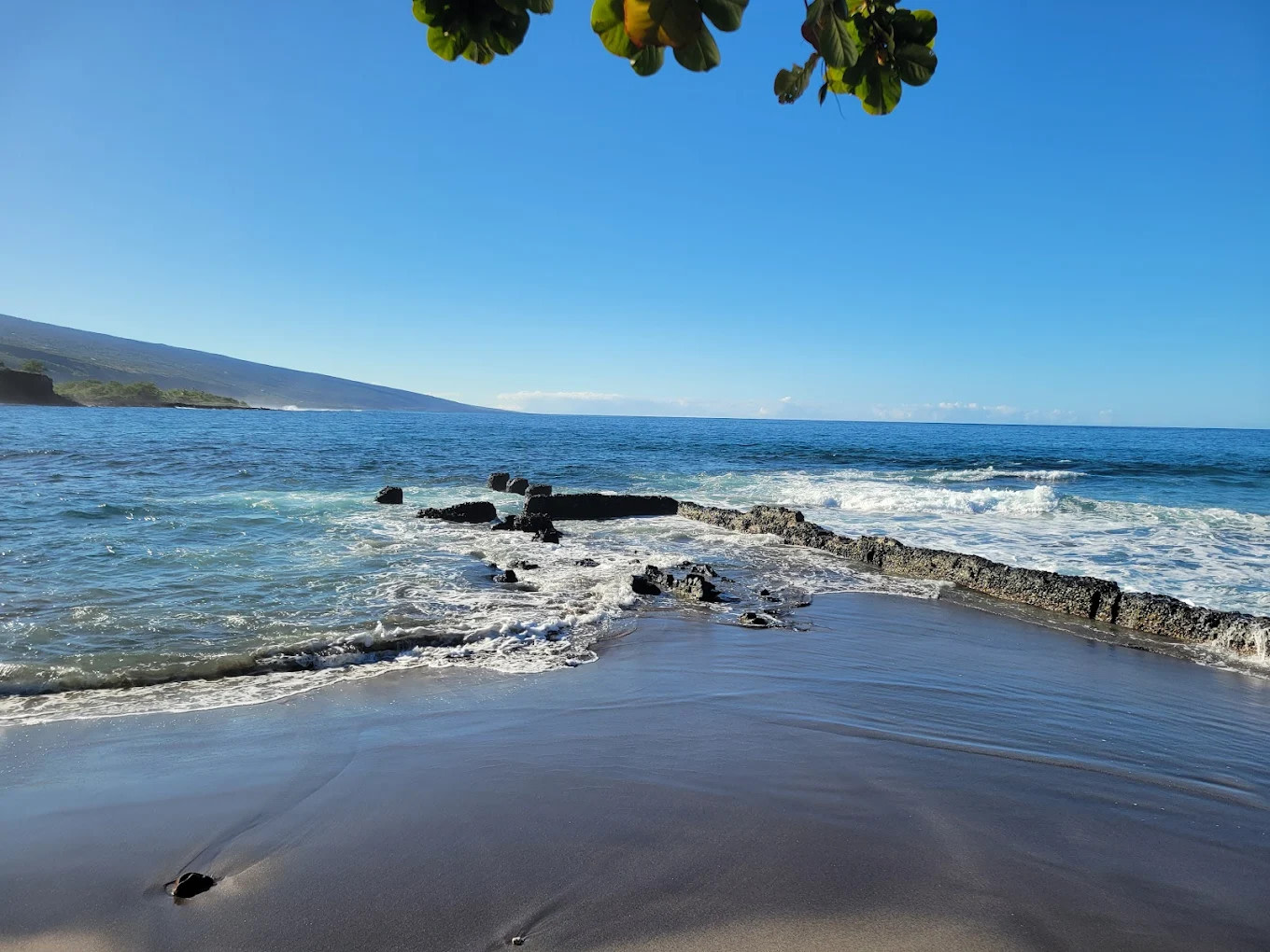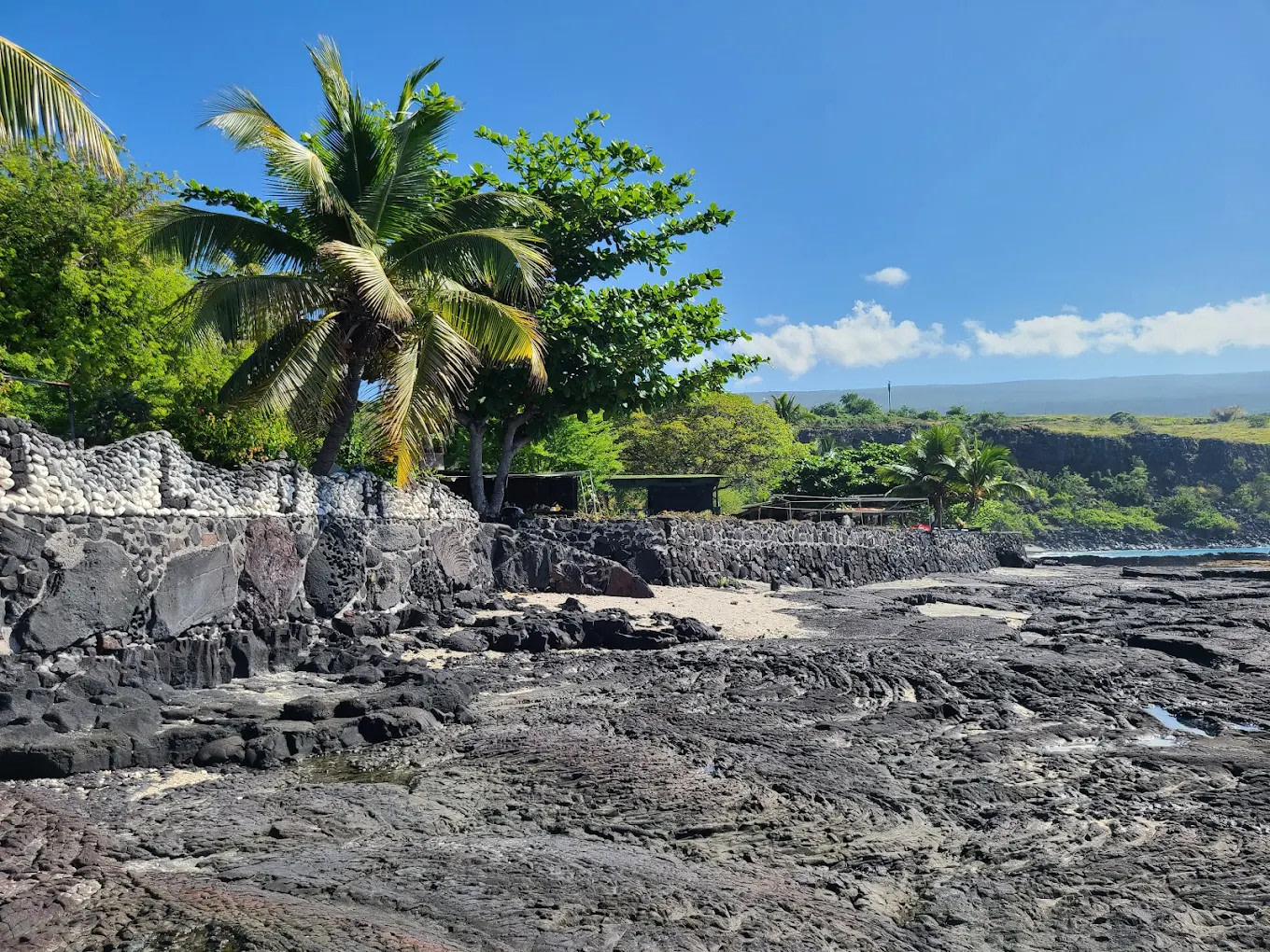30mi from Hawai'i Volcanoes National Park · 3 sites · LodgingWe started our Homestead over 7 years ago on a Level 3 lava zone, knowing it is some of the newest land on the plant. Leaving much of the Natural topography intact, and clearing by hand while introducing many tropical varieties of vegetation to the land has given us a glimpse into nature completely unexpected! We were suggested to open our home last year to people looking for a simple reprieve from weight of the "go-go-go" and have done so with great enjoyment. We hope with hipcamp to be able to reach more people, encouraging the experience in & of biophilia that has brought such tranquility to our lives. Aloha Aina!
Learn more about this land:
Faris' Forest offers a private & magical get away for your Big Island retreat. We're located on a 3 acre homestead between Volcano National Parks, Historic Pahoa town, and Hilo in a peaceful Ohi'a forest. Our land is home to 100's of plant varieties from exotic fruits like Cacao and Pineapple, to dozens of orchid varieties and other tropical flora. We have worked hand-in-hand with the land to create a biophilic experience in hopes of offering our guests an inspirational and energizing experience
The spaceWe started our Homestead over 7 years ago on a lava 3 zone in an O'hia forest. Knowing this is some of the newest land on the planet we have left much of the Natural topography intact while clearing by hand many invasive species and successively planting many tropical, and native varieties of vegetation bringing about this beautiful space. This has given us a glimpse into Nature's hidden biognosis... And what beautiful wisdom it has revealed which we would like to share now with you our guests :)
We're conveniently situated between Volcano National Park, Historic Pahoa Village, and Hilo's Port Town. We were suggested by many after our first 5 years here to open our homestead to others looking for a simple reprieve from the weight of the go-go world with hopes that people leave more connected to go with the flow. We hope by welcoming you to our homebase for your Big Island adventures we'll be able to help connect more people to the biophilia that has brought such tranquility to our lives. Aloha Aina!!
Your private space is a 20'x10' raised cabin that offers covered outdoor space as well as indoor accommodations. You will find the inside furnished with two full spring mattress bunk beds, a small eating bar overlooking our backyard area with two stool seats, a personal work area with an accommodating cooler for perishables (Please provide ice or we can arrange for block ice from our local general store if desired), and personal clothing storage, as well as wi-fi options. Your private cabin space does have full electricity separate from the commons, but still off grid so please refrain from using strong energy draw items like hair wands or instant heaters, such electrical items are not suited for off-grid electrical systems.
Our Common space is open from 7a.m.-10p.m. During this time, you will have full access to a shared kitchen, as well a full bathroom with both an indoor and outdoor shower. The bathroom is available around the clock but after-hours hot water is off so please be aware if you're planning on taking a midnight shower. Please let us know if you need any amenities such as hot water or wi-fi after 10p.m. or before 7a.m. Please make note of these times and being off grid means that we schedules use of high energy items with the daylight hours, and we will set a timer for your convenience of smaller items like internet with advanced notice, otherwise we are very energy efficient in the commons, this is hipcamp, so please don't mistake us for a Hilton :)
We are currently home to 4 wonderful dogs that may greet you as you drive up, 3 spectacular cats, 1 mischievous parrots, 3 goats, 12 chickens and 1 rooster. So please know there are animals present than are part of our Ohana.
We ask for you to take into consideration that we are a "Working homestead" and we are "Off Grid" so there will be projects much like any farm setting, for this reason we are not suitable for infants or young Children. There are animals that can make noises, there are mulch piles always moving around, compost piles that might not be your cup of tea because they smell, but they certainly make great compost teas to help the flowers grow that smell beautiful right outside your window! There are small projects that may look like clutter, such as seed saving, or canning, but those small clutters grow the plants that fill those jars! On occasion we have people who overlook this reality of nature and our connection to it... possibly because they've seen too many staged reality shows or maybe they have never visited a real farm in person before, but we are grateful that the overwhelming majority of people who have had this attitude have left with an appreciation for nature many expressed they never knew they had!! Those guests have filled our hearts with their kind gratitude :) This is a place full of joyful work for us, so please understand we are a destination for many who love nature, and if you're afraid of dirt or nature in general, this might be a great opportunity to connect with what has always been waiting for you to discover!!
Guest accessThe last two blocks into our homestead are rock road as we are a rural location. We will provide a map upon booking with the best access through our Ag-lots for your convenience. Please travel safe and plan for our check-in between 3p.m. and 9p.m. with early and late check-in avalible with approved notice :) Parking is available to either side at the end of the driveway.
Other things to noteAlittle about our homestead;Please understand that we are off-grid, and while we've been off grid 8 years now, we've only been hosting stays like this for 3 years, and we see that we are a destination for many visitors looking for a nature bathing kind of experience, but it's not everyone' cup of coffee... Sooo speaking of coffee, if you are looking for things like an General Electric coffee pot or any electric coffee maker (that are literally designed to wastes energy to just make money) we probably aren't the best fit for your stay ... BUT ... If you want to experience home grown Cacao added to fresh ground coffee brewed Italian style to make an amazing Mocha, FRESH, then we can easily make that while showing you some great energy saving ideas to take home :) like make coffee the way our great grandparents made coffee, it tastes better and is really easier than one may think! We share some toasted homemade sourdough bread out of fresh harvested stocks too, but it again isn't an energy guzzling shinny toaster that does the toasting, it is a cast iron skillet that we toast on, just like our great grandparents did too... Actually one of my favorite skillets belonged to my Great Grandma, so this is the real deal :) Come up and join us when we turn the commons on at 7a.m. if you're interested. We have very little light pollution which will afford beautiful star gazing on clear nights, and epic full moons!! But this means that you should use a flashlight or headlamp which we can provide at your leisure. We don't poop in a bucket in the woods, we actually have a working toilet, and Hot water for showers, a gas powered full range stove. But we also compost and make methane for 100% green energy use... There are chickens and goats, parrots, Dogs & Cats. We have been told by some that it is too cluttered, and by others you make me our home look clean our kitchen table (3'x9') always has some sort of a project on it. One guest said they were so happy to see so much going on as they sat watching us make bread, while another was upset that they didn't have a private kitchen. We feel we are very affordable for what we have to share, and if you feel this description will not fit your needs, then please don't book us because we're affordable. Trust us if we could offer a private kitchen it would only raise our price. We really hope more than anything to share and inspire what a homestead is, and that even in a suburb, or a rural apartment there are small things we can do to save energy and bring ourselves closer to nature!!



